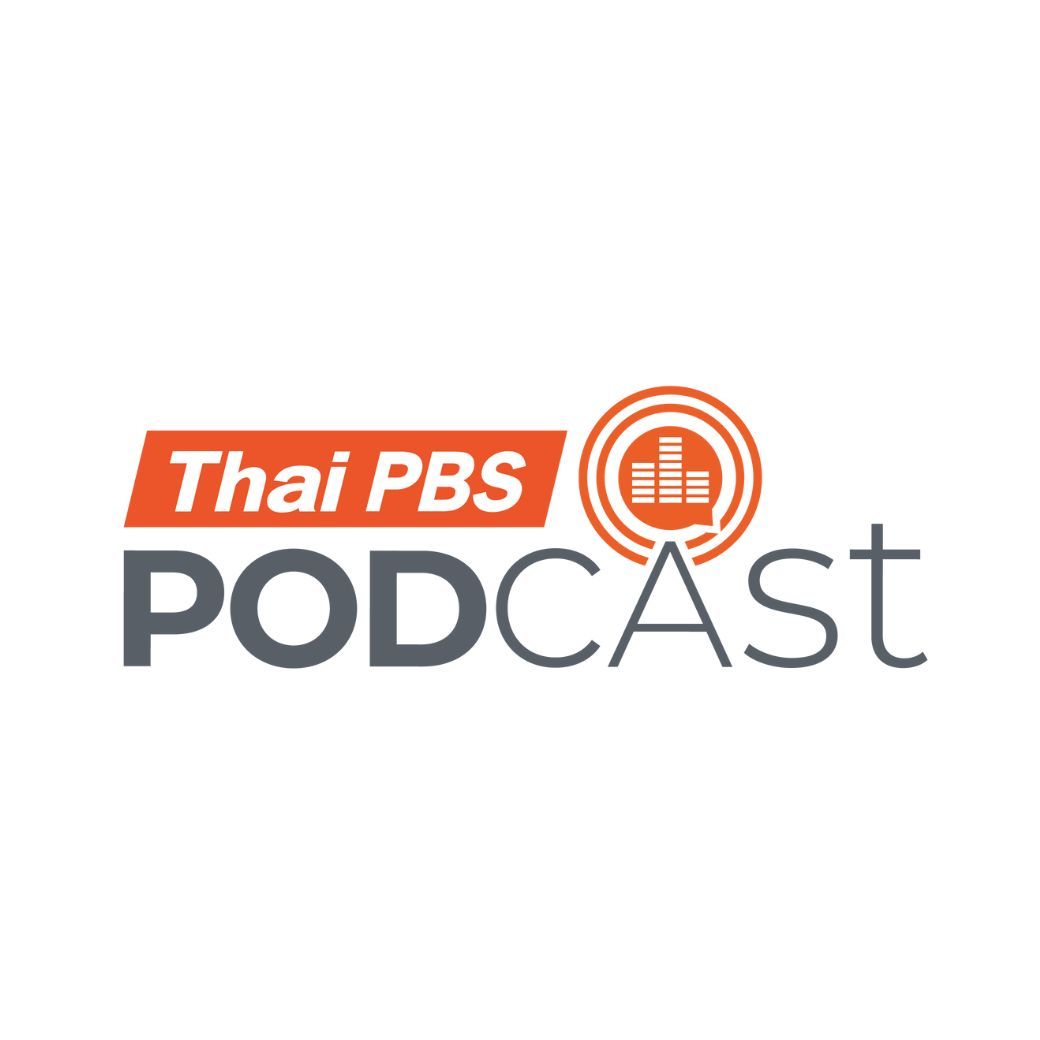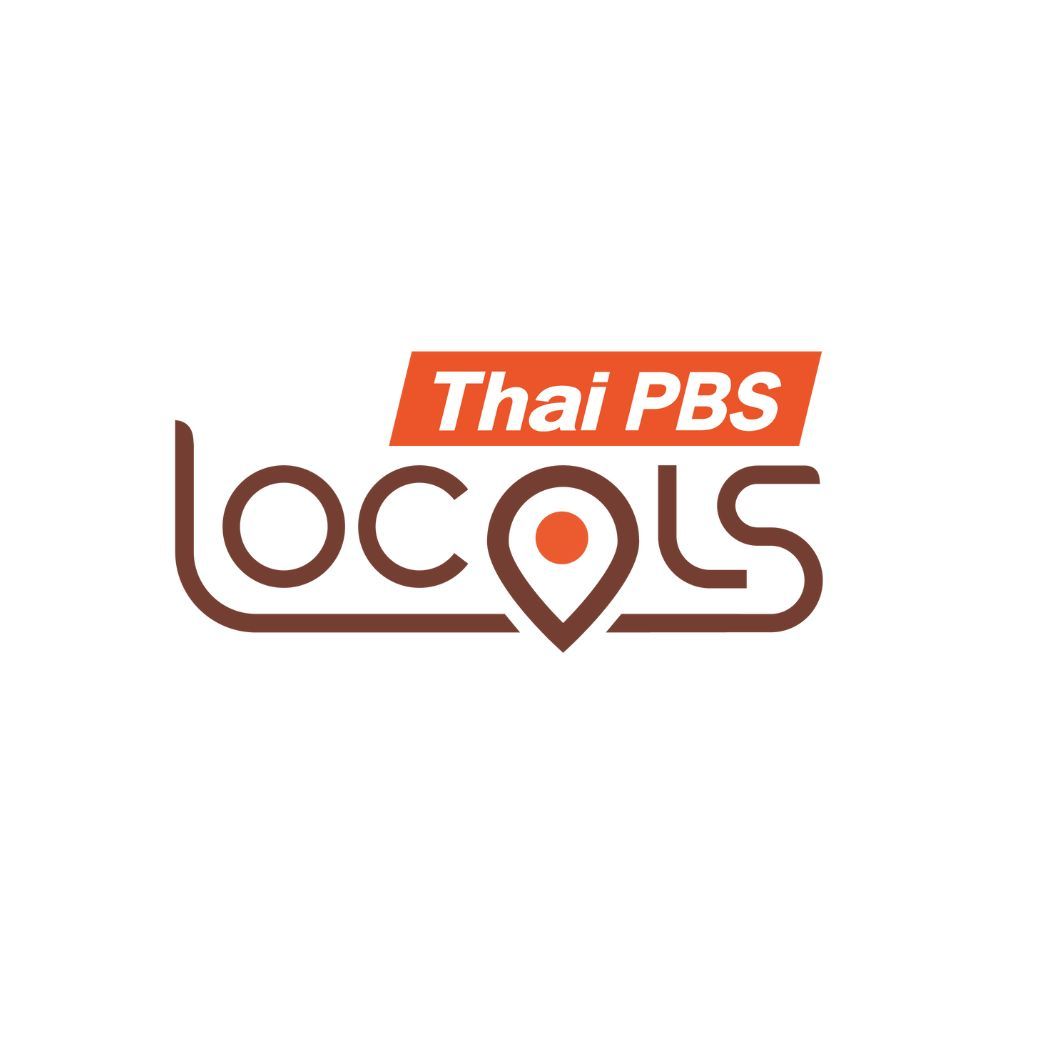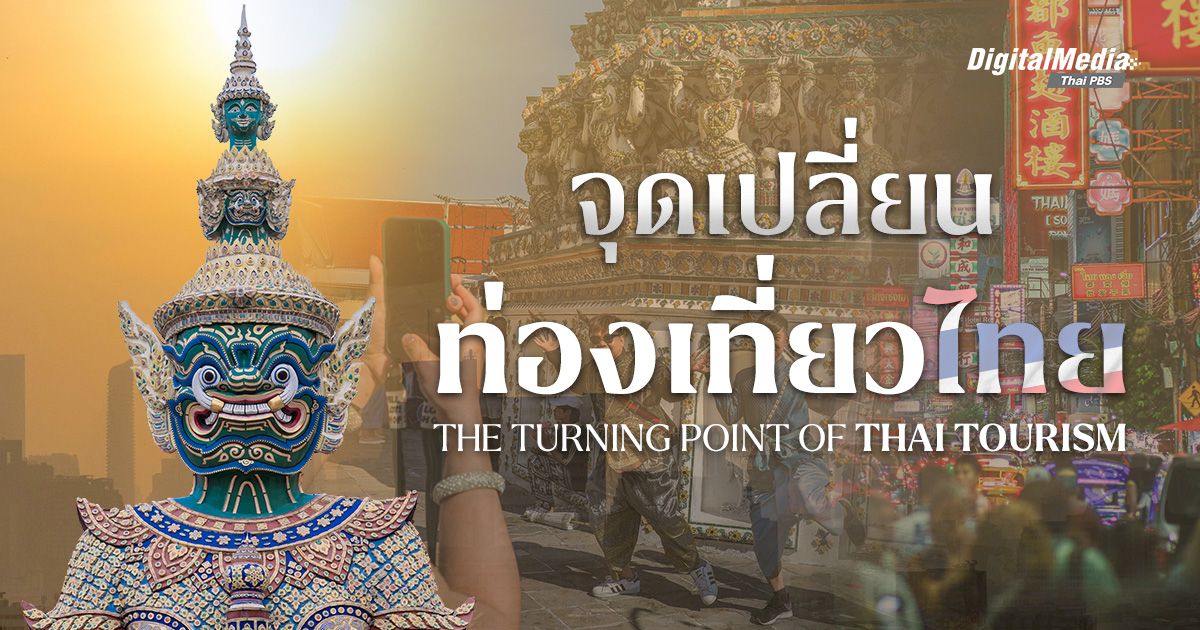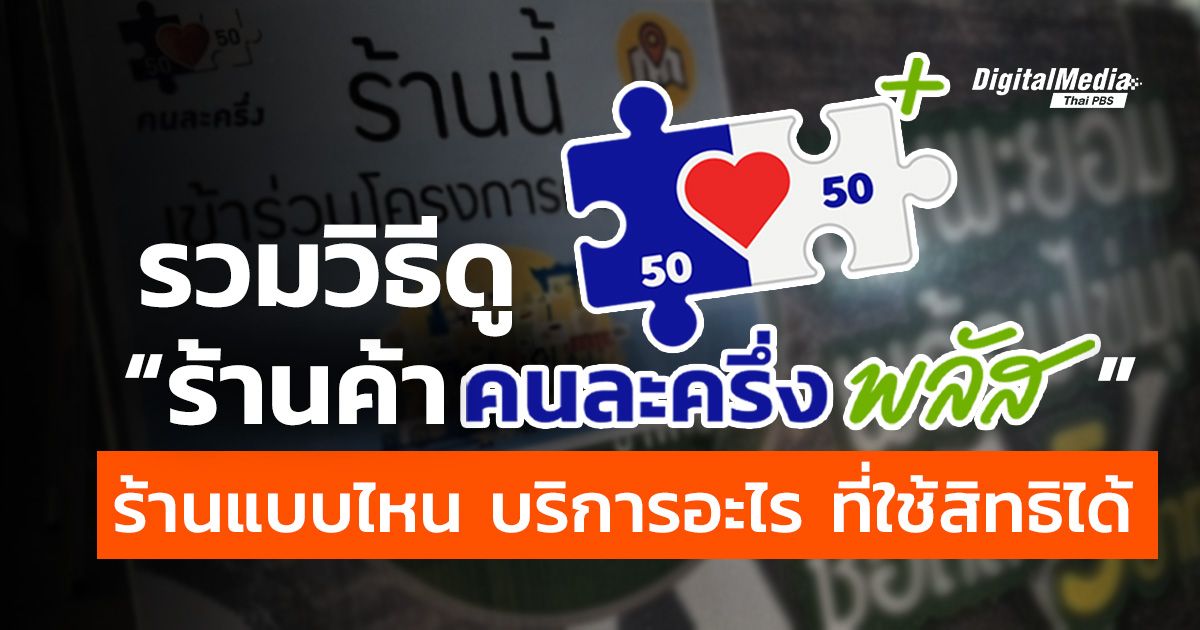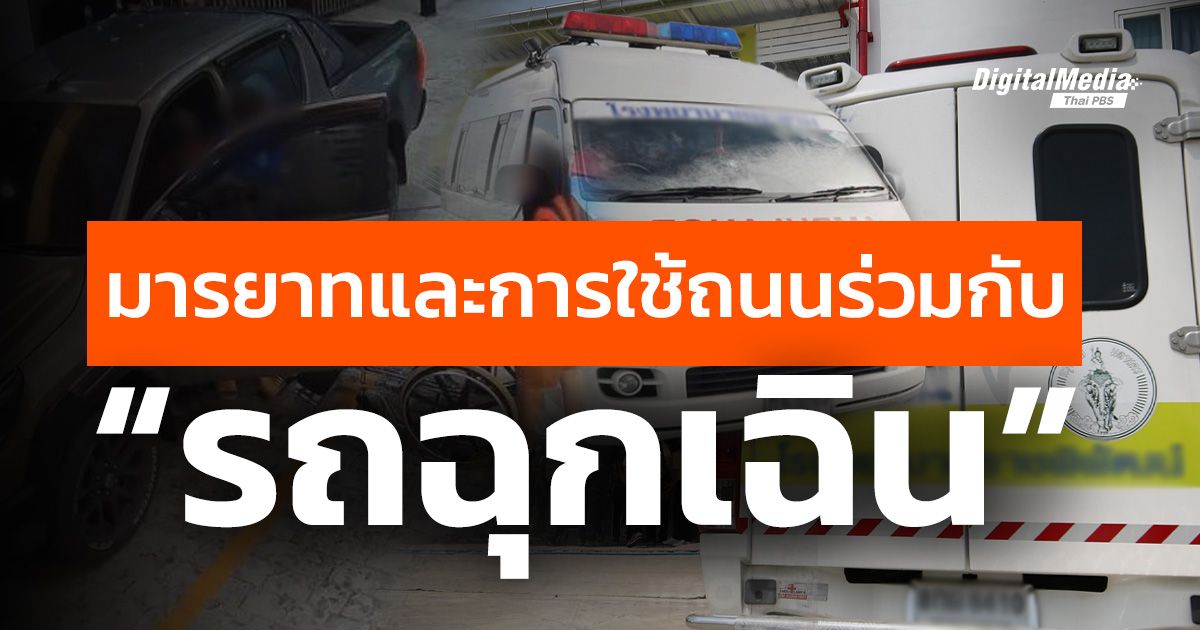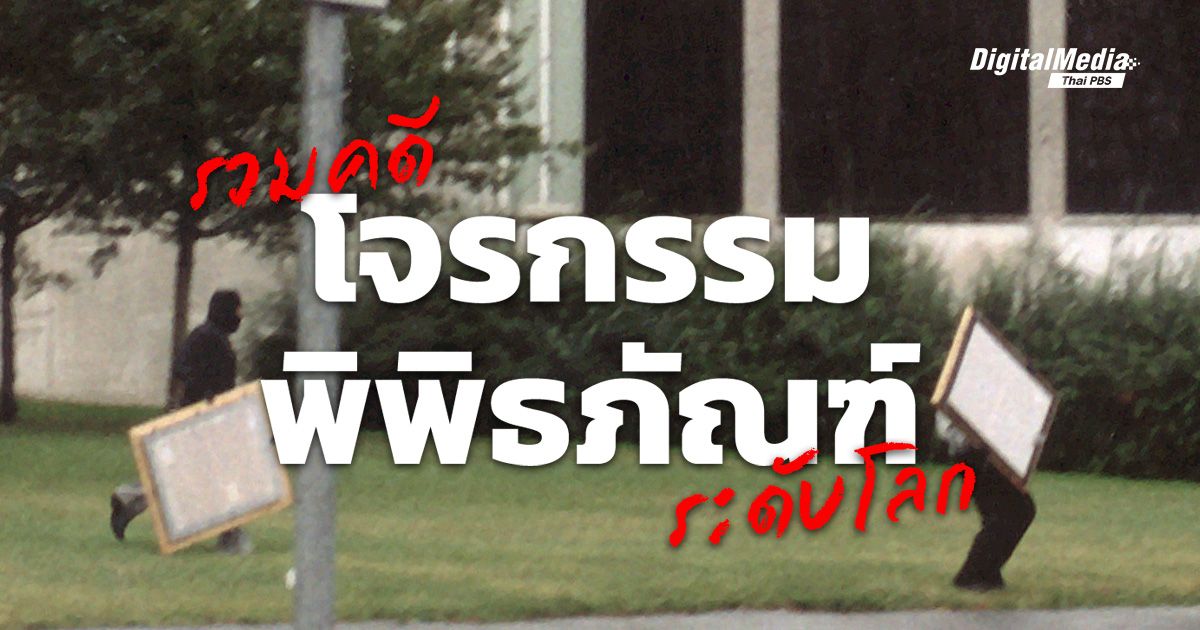‘การท่องเที่ยว’ ถือเป็นอุตสาหกรรมชูโรงที่สร้างรายได้มหาศาลแก่ประเทศไทยมาหลายสิบปี แต่ในปี 2568 สถานการณ์การท่องเที่ยวไทยดูจะไม่สู้ดีนักจากสารพัดปัจจัย
Tourism has been one of Thailand’s most lucrative industries for decades. However, 2025 might be a challenging year for Thai tourism. [Scroll down for the English text]
กระทรวงการท่องเที่ยวและกีฬาระบุว่า จำนวนนักท่องเที่ยวต่างประเทศที่เข้ามาในไทยช่วงเดือนมกราคม-กันยายน 2568 นั้นอยู่ที่ 24.11 ล้านคน ลดลงจากตัวเลขในช่วงเดียวกันของปี 2567 ซึ่งอยู่ที่ 26.08 ล้านคน ขณะที่มีนักท่องเที่ยวเดินเข้ามาในภูมิภาคเอเชีย-แปซิฟิกเพิ่มขึ้นร้อยละ 12 ในช่วง 5 เดือนแรกของปี โดยเฉพาะเวียดนามและญี่ปุ่นที่มีผู้ไปเยือนเพิ่มขึ้น ทำให้ภาพการท่องเที่ยวไทยดูถดถอยยิ่งขึ้นไปอีก
จากข้อมูลเพียงเท่านี้ก็ทำให้หลายคนรู้สึกวิตกว่า “การท่องเที่ยวไทยกำลังหมดยุค” แต่สถานการณ์ในความเป็นจริงนั้นอยู่ในขั้นเลวร้ายจริง ๆ หรือ ? แล้วต้องทำอะไรบ้างเพื่อให้การท่องเที่ยวไทยกลับมาโดดเด่นอีกครั้ง ?
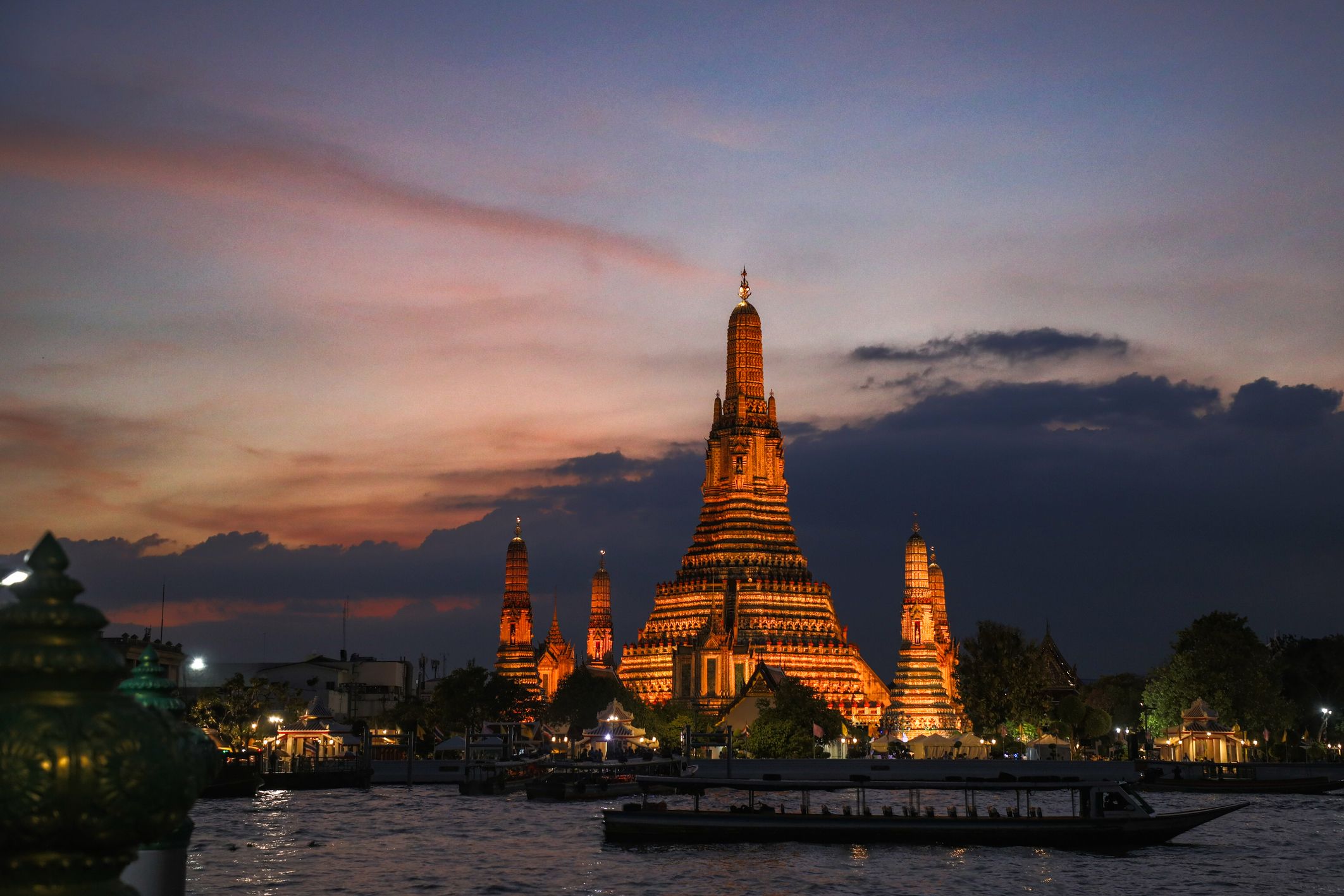
‘ความปลอดภัย’ อาจไม่น่ากังวลเท่า ‘ความจำเจ’ ในภูมิทัศน์การท่องเที่ยวไทย
เหตุผลข้อหนึ่งซึ่งใช้อธิบายจำนวนนักท่องเที่ยวต่างชาติที่ลดน้อยลงก็คือ ภัยขบวนการค้ามนุษย์และเครือข่ายแก๊งคอลเซนเตอร์ทั้งในไทยและประเทศเพื่อนบ้าน อย่างเมื่อเดือนมกราคม 2568 ที่ผ่านมา ดาราจีนคนหนึ่งถูกล่อลวงให้ไปทำงานภายใต้กลุ่มทุนเทาที่เมียนมาโดยใช้ อ.แม่สอด จ.ตาก เป็นทางผ่าน ข่าวเช่นนี้จึงอาจทำให้นักท่องเที่ยวต่างชาติ – โดยเฉพาะชาวจีน – ตั้งคำถามถึงความปลอดภัยในไทยไม่มากก็น้อย
อย่างไรก็ตาม ในความเป็นจริง ปัญหาสแกมเมอร์อาจไม่ได้กระทบต่อความเชื่อมั่นด้านการท่องเที่ยวในไทยมากอย่างที่เราคิด เช่น เมื่อช่วงวันชาติจีน (Golden Week) ระหว่างวันที่ 26 กันยายน-2 ตุลาคม 2568 จำนวนนักท่องเที่ยวจีนที่ไทยอยู่ที่ประมาณ 22,000 คน/วัน และราคาตั๋วเครื่องบินเส้นทางกรุงเทพฯ-ปักกิ่งพุ่งสูงสุดถึง 400 เปอร์เซ็นต์ และในปัจจุบัน ชาวจีนกลายเป็นนักท่องเที่ยวอิสระ (FIT) เพิ่มมากขึ้น เขาอาจมาเยือนไทยตามอินฟลูเอนเซอร์หรือตัดสินใจแพ็กกระเป๋าปุบปับ ต่างจากเมื่อก่อนที่เดินทางพร้อมบริษัททัวร์
“จริง ๆ [ปัญหา] คอลเซนเตอร์ไม่มีผลอะไรกับการท่องเที่ยว แม้แต่คนต่างประเทศที่เข้ามาไทยก็ไม่ได้รู้สึกอะไร เพราะเขาก็จะมีวิธีป้องกันบางส่วนของเขาอยู่แล้ว แม้แต่คนจีนที่ได้พบ เขาก็บอกว่าไม่มีผล” ดร.สุเทพ อารมณ์รักษ์ นายกสมาคมส่งเสริมธุรกิจท่องเที่ยวไทย (สธทท.) และกรรมการผู้จัดการบริษัทซิลเวอร์ สโตน ทัวร์ แอนด์ แทรเวิล กล่าวกับ Thai PBS

อีกข้อโต้แย้งหนึ่งคือ นักท่องเที่ยวระยะไกล (long-haul tourists) จากยุโรป ตะวันออกกลาง และแอฟริกาเข้าไทยเพิ่มขึ้น จนช่วยประคองรายได้อุตสาหกรรมการท่องเที่ยวเอาไว้ สิ่งนี้จึงสะท้อนได้ว่า ชาวต่างประเทศยังเชื่อมั่นในความปลอดภัยของไทย ไม่ว่าจะมาพำนักสั้น ๆ หรือย้ายมาอยู่ระยะยาว “[ในลอนดอน] คุณไม่สามารถยกมือถือขึ้นมาใช้ในที่สาธารณะได้ด้วยซ้ำ [เนื่องจากปัญหาโจรขโมยมือถือ] แต่ในไทยนี่เป็นตรงกันข้ามเลยครับ” ไมค์ ยู อินฟลูเอนเซอร์ชาวอังกฤษที่อาศัยอยู่ในไทย กล่าวกับ Thai PBS World เมื่อเดือนกันยายน 2568
ทั้งนี้ เรื่องที่กระทบต่อการท่องเที่ยวในไทยอย่างหนักก็คือ ภาวะเศรษฐกิจโลกชะลอตัว กับการขาดสิ่งดึงดูดใจใหม่ ๆ ในไทย และปัญหาทั้ง 2 ข้อนี้ก็เกี่ยวพันกันอย่างแยกไม่ออก
การปรับภาษีนำเข้าของสหรัฐฯ ความไม่แน่นอนทางเศรษฐกิจ-การเมือง อัตราการว่างงาน รวมถึงภัยธรรมชาติและปัญญาประดิษฐ์ ล้วนสร้างความผันผวนทางเศรษฐกิจไปแทบทั้งโลก เมื่อเงินในกระเป๋าสตางค์ของคนหลายคนเริ่มฝืดเคือง การท่องเที่ยวเพื่อการพักผ่อนหรือความเพลิดเพลิน (leisure) จึงเป็นเรื่องที่ “รอได้” สำหรับคนส่วนหนึ่ง และคนกลุ่มนี้เองคือนักท่องเที่ยวที่หายไปในไทย ขณะเดียวกัน บางประเทศยังคงมีชาวต่างชาติเดินทางเข้าไปด้วยวัตถุประสงค์อื่น ๆ จนทำให้ภาคการท่องเที่ยวได้อานิสงส์ตามไปด้วย
“ยกตัวอย่างสิงคโปร์ ไม่ใช่ว่า [สถานการณ์เศรษฐกิจ] เขาจะดีกว่ากันเยอะนะคะ แต่ถ้าเราไปดูโปรไฟล์ของคนที่เข้าประเทศสิงคโปร์ เขาจะไปทำงาน ติดต่อธุรกิจ ไปประชุม แล้วเที่ยวต่อ เพราะฉะนั้น การเดินทางในลักษณะแบบนี้... ถึงแม้จะมีเรื่องเศรษฐกิจอะไรในโลกที่ชะลอตัว เขาก็ยังไป” ศุภจี สุธรรมพันธุ์ ประธานเจ้าหน้าที่บริหารของบมจ.ดุสิตธานี ณ ขณะนั้น อธิบายไว้ในรายการสมมุติว่า เมื่อเดือนกรกฎาคม 2568
เมื่อเจอภาวะเศรษฐกิจชะลอตัว หลายประเทศจึงออกมาตรการกระตุ้นให้คนท้องถิ่นเที่ยวกันเอง อย่างเมืองไทยเราก็มีโครงการต่าง ๆ เช่น เที่ยวไทยคนละครึ่ง และการส่งเสริมการเที่ยวเมืองรอง 55 จังหวัด อย่างไรก็ดี บางประเทศมีกลยุทธ์มากกว่าการอัดฉีดเงินและการโฆษณา เพื่อจูงใจให้ผู้คนเที่ยวในท้องถิ่น “[เช่น] ประเทศจีน เขาก็เศรษฐกิจไม่ดี จึงต้องชักจูงคนจีนเที่ยวจีนด้วยกันก่อน แล้วเขาก็ปรับตัว เขาดู [การท่องเที่ยวไทย] มา 10-20 ปี เห็นว่าคนไทยยิ้มเก่ง บริการดี สะอาด แล้วก็ทำตาม คนจีนชอบไปวัดไปไหว้พระที่ไทย... ก็สร้างดักอยู่แถวสิบสองปันนาเลย” สุเทพยกตัวอย่าง “[ตอนนี้] ประเทศไทยมีอะไร สิบสองปันนามีหมด”
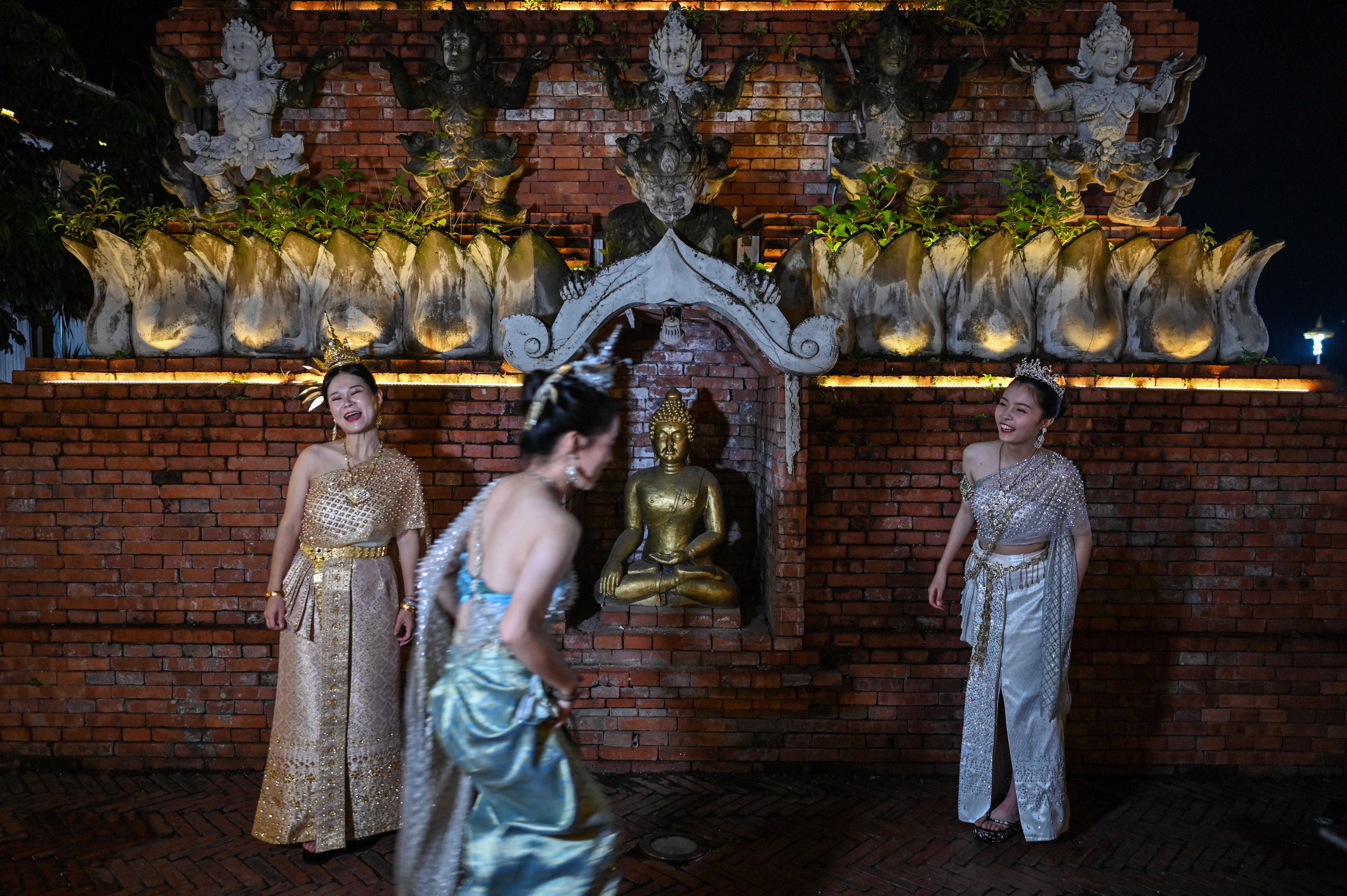
ขณะที่ประเทศเพื่อนบ้านสามารถเนรมิตแหล่งท่องเที่ยวใหม่ ๆ เมืองไทยยังคงติดหล่มบางอย่างซึ่งทำให้โครงสร้างพื้นฐานและจุดขายใหม่ ๆ เกิดขึ้นไม่ได้เสียที จึงเป็นอีกเหตุผลหนึ่งว่า ทำไมนักท่องเที่ยวต่างชาติถึงไหลไปประเทศเพื่อนบ้านมากขึ้น “เวียดนามเขามีแม่เหล็กใหม่ ๆ ตั้งแต่เหนือ กลาง ใต้ ไม่ว่าจะเป็นบานาฮิลส์ ซาปา หรือฟูก๊วก เขาสามารถสร้างกระเช้าและสิ่งใหม่ ๆ จนติดอันดับต้น ๆ ของโลกได้ คนที่เคยไปแล้วก็ไปเที่ยวอีก” สุเทพเล่า “ไม่มีอะไรเลยนะครับถ้าเขาไม่สร้างขึ้นมาใหม่ ไทยเราดีกว่าเยอะมาก สู้ได้แหลกลาญเลย แต่เรายังไม่ได้สร้างอะไรเลย [ที่ดึงดูดให้คนกลับมาอีก]”
นอกจากนี้ ผู้ประกอบการภาคการท่องเที่ยวรายย่อย (micro) และธุรกิจขนาดย่อม (small) – โดยเฉพาะในจังหวัดใหญ่ ๆ ทั้ง กรุงเทพฯ ชลบุรี สุราษฎร์ธานี ภูเก็ต และเชียงใหม่ – ยังต้องเผชิญกับทุนต่างชาติผิดกฎหมายที่เข้ามาเปิดที่พัก ร้านอาหาร และบริษัทนำเที่ยว จนแย่งลูกค้าต่างชาติไปและอาจทำให้เงินไหลออกจากท้องถิ่น สุเทพมองว่า ปัญหานี้หนักข้อขึ้นในปัจจุบัน ส่วนหนึ่งเป็นเพราะผู้ประกอบการท้องถิ่นบางรายไปจับมือกับทุนเหล่านี้เสียเอง “ไม่ใช่ว่า [ทุนต่างชาติ] เขาทำฝั่งเดียวได้สำเร็จครับ [ในกรณีธุรกิจโรงแรม] พวกนี้จะเริ่มจากการเหมาอะพาร์ตเมนต์ [ของคนไทย] ก่อน พอผ่านไปเรื่อย ๆ [ต่างชาติก็เสนอว่า] ‘ยูขายเลยดีกว่า เดี๋ยวฉันบริหารเอง’”
จากอุปสรรคทั้งหมดที่กล่าวมา จึงน่าคิดต่อไปว่า เราควรพลิกช่วงเวลา (วิกฤต) เช่นนี้ให้เป็นโอกาสอย่างไร เพื่อทำให้การท่องเที่ยวไทยกลับมา “ปัง” พร้อมเสริมความแข็งแกร่งให้แก่ผู้ประกอบการทั้งเล็กและใหญ่ ?
[ปัจจุบัน] เรากลายเป็น ‘หนึ่งในตัวเลือก’ ของนักเดินทาง เราเคยเป็น [ตัวเลือกหลัก] และก็ยังเป็นอยู่ในอันดับต้น ๆ แต่เรามีคนที่เริ่มไล่ใกล้เข้ามาเรื่อย ๆ... เราต้องกลับมาเป็น ‘The One’ หรือ ‘The Choice’ ให้ได้ – ศุภจี สุธรรมพันธุ์
ฟื้นการท่องเที่ยวไทย ‘ทั้งองคาพยพ’
ไม่ว่าจะเล็กจะใหญ่ ผู้ประกอบธุรกิจต่างมีแนวทางการปรับตัวที่ต่างกันไป แต่ทุกคนล้วนพูดคล้ายกันว่า รัฐต้องสนับสนุนให้เอกชนขับเคลื่อนการท่องเที่ยวอย่างเต็มที่ “อุตสาหกรรมท่องเที่ยวมันอยู่ได้ด้วยการขับเคลื่อนของผู้ประกอบการภาคเอกชนอยู่แล้ว ไปดูประเทศที่เขาเจริญแล้ว [รัฐ] เขาให้สัมปทานเอกชน” สุเทพให้ความเห็น “[เช่น โครงการก่อสร้างกระเช้าภูกระดึง] ถ้าเกิดมีนักลงทุนอยู่แล้ว รัฐไม่ต้องลงทุนนะ ให้เอกชนลงทุนไปเลย มีสัญญากันว่าดำเนินการกี่ปี พอถึงเวลาก็ตกเป็นของรัฐ แล้วดึงคนในท้องถิ่นมาทำอาชีพใหม่ด้วย”
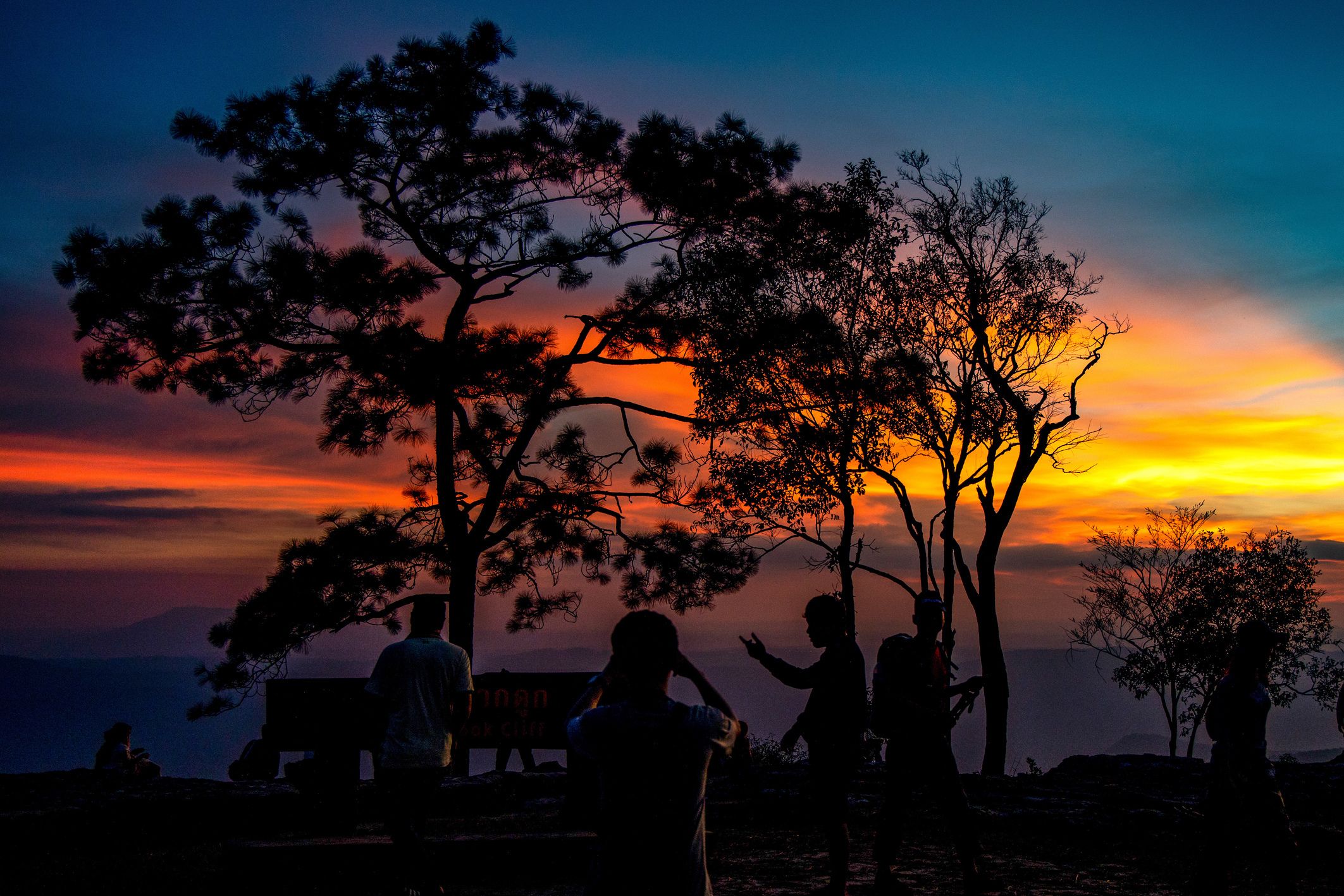
ส่วนศุภจี – ในฐานะผู้บริหารบริษัท ณ ขณะนั้น – เคยกล่าวไว้ว่า นอกจากจะต้องกระตุ้นศักยภาพการท่องเที่ยวไทยและพัฒนาบุคลากรที่เกี่ยวข้องแล้ว รัฐก็ต้องลดความซ้ำซ้อนทางราชการด้วย “[เช่น] เอากรม กอง และหน่วยงาน [มา] ทำงานเชื่อมโยงกัน เพื่อให้เกิดวัตถุประสงค์เดียวกัน... คือทำให้การท่องเที่ยวไทยไปข้างหน้าได้” ทั้งนี้ สิ่งหนึ่งที่ทั้งภาครัฐและเอกชนต้องทำเพื่อเรียกแขกให้โลกกลับมาเยือนสยามเมืองยิ้มอีกครั้งซ้ำ ๆ บ่อย ๆ ก็คือ การ “รีแบรนด์” ภาพลักษณ์การท่องเที่ยว
ช่วงปี 2568 ที่ผ่านมานี้ ก็มีข้อเสนอหลายอย่างเกี่ยวกับการสร้างภาพลักษณ์ท่องเที่ยวไทยใหม่ ศุภจีเคยกล่าวไว้ในรายการสมมุติว่า ว่า การท่องเที่ยวไทยควรสร้างจุดขายใหม่ 3 ข้อ คือ การท่องเที่ยวสีเขียว (Green) การท่องเที่ยวสร้างสรรค์ (Creative) และการท่องเที่ยวอัจฉริยะ (Smart) ซึ่งสอดคล้องกับพฤติกรรมของนักเดินทาง และแนวทางการพัฒนาในปัจจุบัน
การท่องเที่ยวสีเขียวนั้นไม่ได้มีการเชิญชวนให้นักท่องเที่ยวไปเยี่ยมชมธรรมชาติ และสร้างความตระหนักรู้เรื่องปัญหาโลกรวนเท่านั้น แต่ยังหมายถึงการกระตุ้นให้ผู้ประกอบการจัดการทรัพยากรให้เกิดประสิทธิภาพสูงสุด พร้อมปล่อยมลพิษน้อยที่สุด โดยรัฐนั้นต้องสนับสนุนการเปลี่ยนผ่านเพื่อความยั่งยืนทางสิ่งแวดล้อม “สมมุติว่า [ผู้ประกอบการ] ไปลงทุนเรื่องพลังงานทดแทน อาจจะใช้โซลาร์เซลล์ พลังงานน้ำ ลม หรือใด ๆ ก็สามารถเอามาลดหย่อนภาษีได้มากกว่าปกติ” ศุภจีกล่าว “[หรือหากโรงแรมอยากจัดการขยะอาหาร] เราอยากจะให้เขาซื้อเครื่อง [ย่อย] ขยะอาหารมาทำปุ๋ยอินทรีย์... เขาก็ต้องอยากได้ subsidy [เงินอุดหนุน] หรือการลดหย่อนด้วย”
ส่วนการท่องเที่ยวสร้างสรรค์นั้น อาจทำได้ผ่านการขายซอฟต์พาวเวอร์ ภูมิปัญญาท้องถิ่น หรือแม้กระทั่งประวัติศาสตร์ชาติ เช่น การท่องเที่ยวสายมู กับเส้นทางท่องเที่ยวบรรพชีวินวิทยาในภาคอีสาน ไม่เพียงแต่จะมีรายได้เพิ่ม แต่คนท้องถิ่นยังได้กลับมาทำงานที่บ้านเกิด รู้สึกภาคภูมิใจ พร้อมพัฒนาชุมชนของตัวเองไปในตัว ส่วนภาครัฐ – โดยเฉพาะหน่วยงานด้านการศึกษา การท่องเที่ยว และวัฒนธรรม – สามารถเสริมสร้างองค์ความรู้ ที่จำเป็นเพื่อให้ชุมชนดำเนินงานเอง และหากทำถูกทาง ธุรกิจชุมชนเช่นนี้ก็อาจส่งต่อจากรุ่นสู่รุ่นได้ด้วย
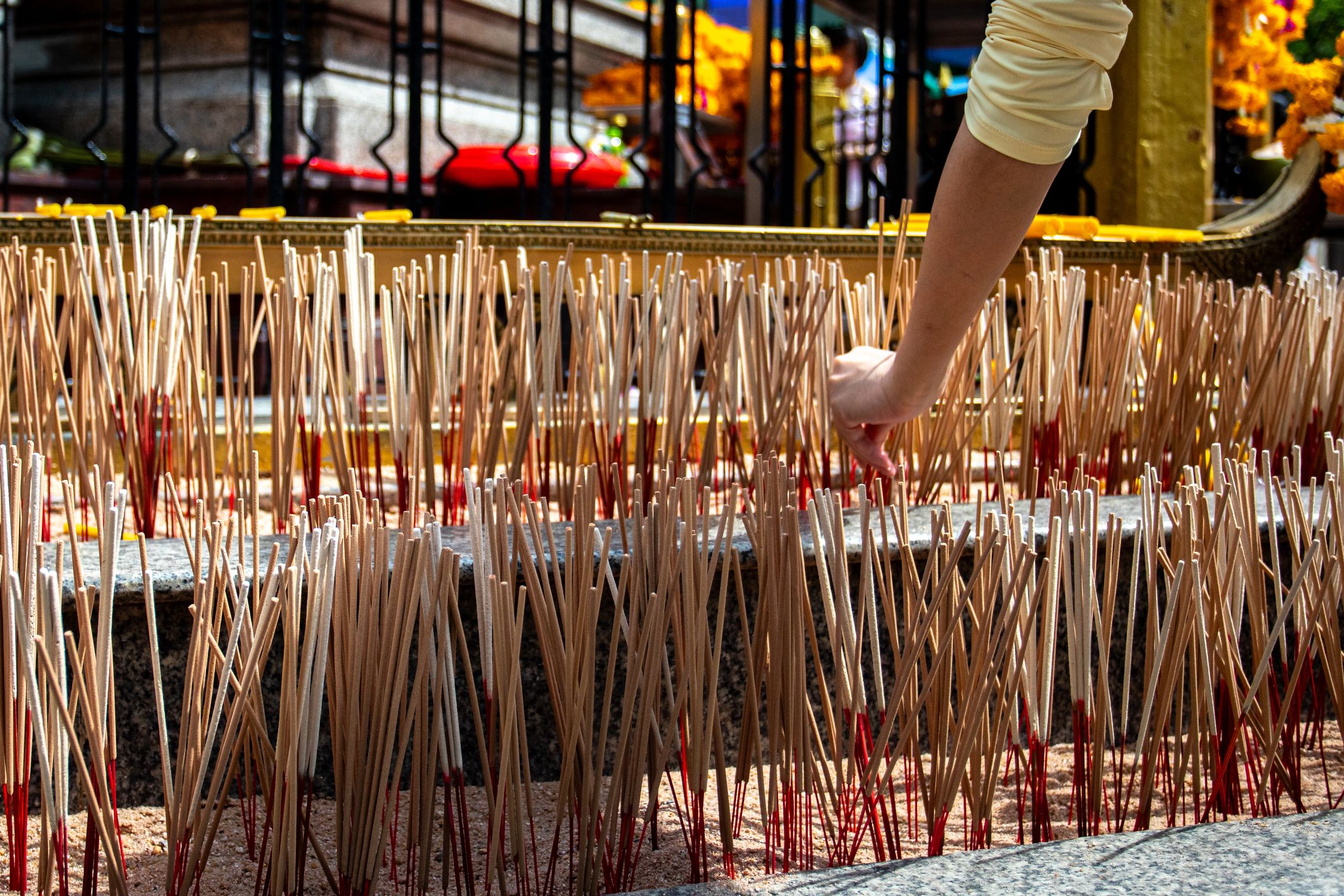
สัญญา มัครินทร์ ผู้ก่อตั้งท่องเที่ยวสีชมพู อ.สีชมพู จ.ขอนแก่น แบ่งปันแนวทางการพัฒนาธุรกิจท่องเที่ยวชุมชนไว้ในรายการฟังเสียงประเทศไทย เมื่อเดือนสิงหาคม 2567 ว่า “ในแง่หนึ่ง นอกจากจะใช้การท่องเที่ยวเป็นเครื่องมือ สิ่งหนึ่งเราทำคือ... 360 องศาครับ ทำทั้งเรื่องการศึกษา ใช้เครื่องมือการเรียนรู้ สร้างประสบการณ์ ให้คนมาใช้ศักยภาพพื้นที่ตรงนั้น ไม่ใช่มาเที่ยวมาถ่ายรูป เราเริ่มไปทำงานกับครู หรือแม้แต่ชาวบ้านเอง ให้เขาได้ทำงานมิติอื่น ๆ”

สำหรับการสร้างท่องเที่ยวอัจฉริยะนั้น ควรชูความสะดวกสบายคู่กับความปลอดภัย อย่างน้อยที่สุด แหล่งท่องเที่ยวกับโรงแรมต้องมีอินเทอร์เน็ตที่ดี ถ้าพร้อมมากพอ ก็ควรลงทุนเพิ่มอุปกรณ์เชื่อมต่ออินเทอร์เน็ต เพื่อรองรับดิจิทัลนอแมดและคนเจนซี ส่วนบริษัทท่องเที่ยวต่าง ๆ ก็อาจสร้างแพลตฟอร์มให้นักท่องเที่ยวกลุ่ม FIT เลือกโปรแกรมทัวร์ในแบบที่กำหนดเองได้ – ไม่ว่าจะเป็นสถานที่หรือตัวไกด์ก็ดี – แทนที่จะจัดทัวร์ตายตัวขนาดใหญ่เหมือนเมื่อก่อน และรัฐเองต้องควบคุมมาตรฐานความปลอดภัยสำหรับสถานที่ต่าง ๆ กับใช้เอไอช่วยวางระบบป้องกันและบรรเทาภัย พร้อมวิเคราะห์จุดเสี่ยงต่าง ๆ
นอกจากการรีแบรนด์ภาพลักษณ์แล้ว ภาครัฐควรทำโปรโมชัน “ลดแลกแจกแถม” ดึงดูดให้คนต่างชาติมาเที่ยวไทยด้วย สุเทพมองว่า มาตรการยกเว้นวีซ่าถือเป็นจุดเริ่มต้นที่ดี แต่ก็ต้องมีการอุดหนุนเงินให้นักท่องเที่ยวด้วย นโยบายเช่นนี้สามารถอัดฉีดเงินเข้าสู่ธุรกิจท่องเที่ยวโดยตรง บวกกับลดค่าใช้จ่ายของนักท่องเที่ยวไปในตัว ไม่ต่างจากนโยบายคนละครึ่ง อีกทั้งยังประยุกต์ให้เข้ากับโครงการส่งเสริมเมืองรอง 55 จังหวัดได้ด้วย
“ก็คิดอยู่ว่า… ทำไมคุณไม่ทำเกมสุ่มแจกบัตรแทนเงินสดที่จุดตรวจคนเข้าเมืองเหมือนไต้หวัน เพื่อให้นักท่องเที่ยวมาใช้จ่ายล่ะ ? ช่วยผู้ประกอบการได้ไม่รู้กี่ร้านต่อกี่ร้านครับ ถามว่าหน่วยงานรัฐเคยทำไหม ? เคยครับ แต่ทำไม่ต่อเนื่อง” สุเทพเล่า “หรืออีกไอเดียหนึ่งคือ รัฐให้เงินอุดหนุนบริษัททัวร์ จัดรถบัสและโปรแกรมเที่ยวเมืองรอง เลี้ยงอาหารชุมชนอย่างดีให้นักท่องเที่ยวกินฟรี ให้เขาได้ชอปปิง ดูโชว์ ฯลฯ อันนี้นักท่องเที่ยวได้ตรงเลย... ผู้ประกอบการก็บอกว่า ‘ทำไมไม่ทำล่ะ ?’”
หน่วยงานรัฐบอกว่า เขามีหน้าที่กระตุ้น [การท่องเที่ยวผ่าน] โฆษณาและพีอาร์... แต่การทำให้เกิดการรับรู้อย่างเดียวไม่พอครับ มันต้องกระตุ้นเม็ดเงินไปถึงภาครากหญ้าหรือผู้ประกอบการ SMEs ด้วย อย่างที่นโยบายรัฐทุกรัฐบาล [มักจะกล่าวถึง] – สุเทพ อารมณ์รักษ์
ภาครัฐไทยและสายการบินก็พยายามร่วมกันเปิดเส้นทางใหม่ ๆ เพื่อดึงดูดนักท่องเที่ยวระยะไกลที่มีกำลังซื้อสูง เช่น อาบูดาบี-กระบี่ ที่เพิ่งเริ่มให้บริการ และอาบูดาบี-เชียงใหม่ ซึ่งจะเปิดเที่ยวบินแรกในเดือนพฤศจิกายน 2568 นี้ อย่างไรก็ดี ยังมีนโยบายอีกอย่างหนึ่งที่ดูจะท้าทายสหัชญาณของเราไม่มากก็น้อย คือ การกระตุ้นให้คนไทยไปเที่ยวเมืองนอก เมื่อไทยเราหวังให้ชาวต่างชาติมาเยือนไทย พวกเขาก็ย่อมอยากให้เราไปเที่ยวที่บ้านเมืองเขาเช่นกัน และถ้ามองในแง่ธุรกิจการบินด้วย ก็ไม่มีสายการบินใดอยากตีเครื่องเปล่ากลับกองบินตัวเอง
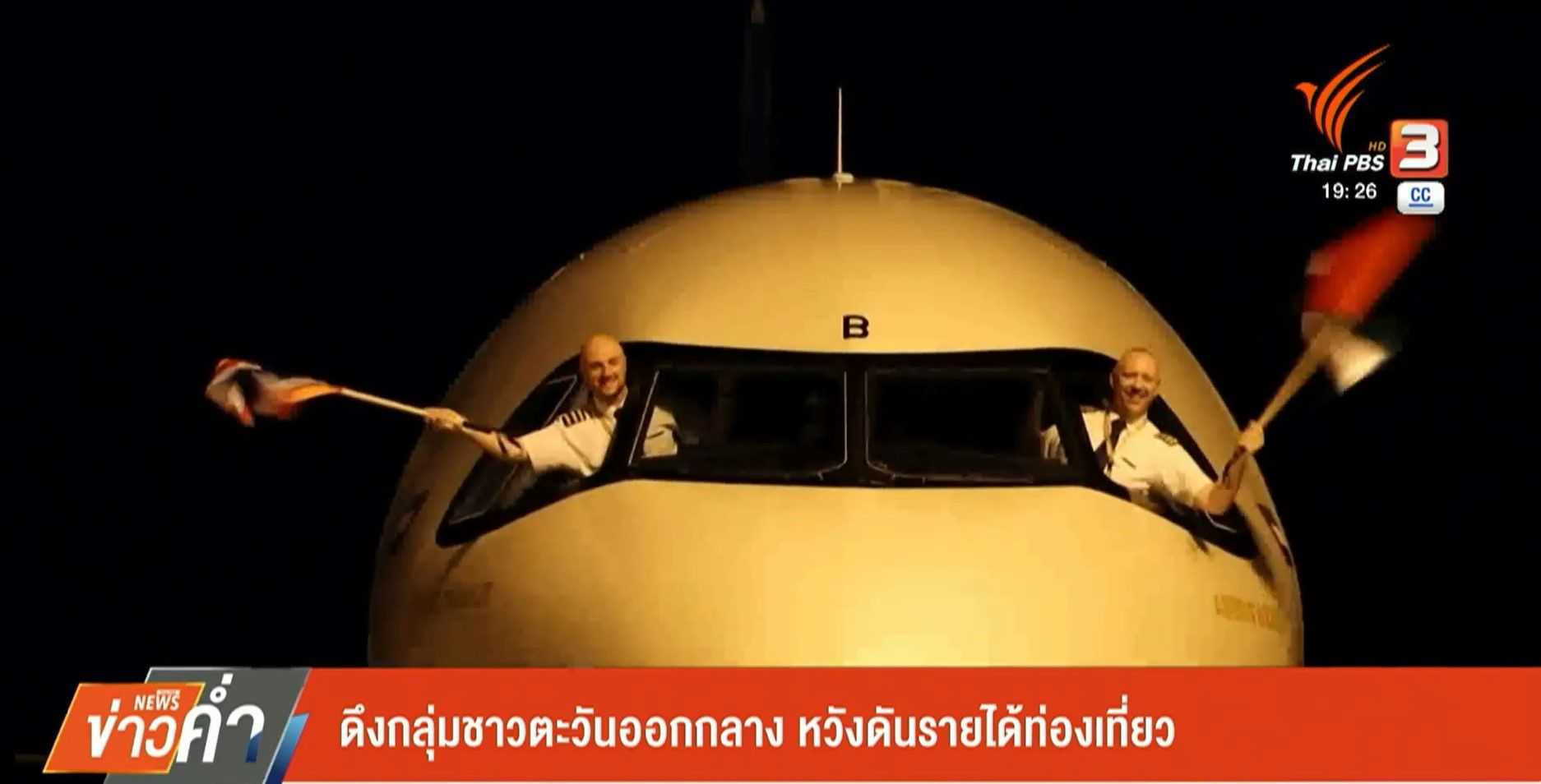
“สมมุติว่าคุณเป็นคนญี่ปุ่นที่มาไทย ขาบินมา คุณจ่าย 10,000 บาท แต่ตอนขากลับ เครื่องบินไม่มีคนไทยเลย แทนที่จะจ่ายเงินเท่าขามา คุณก็โดนชาร์จค่าใช้จ่ายเพิ่มคูณสอง [เพื่อชดเชยผู้โดยสารที่หายไป] คำถามคือ แล้วคุณจะมาไหม ?” สุเทพตั้งคำถาม “[เพราะฉะนั้น] ถ้าคุณไม่เอาคนไทยไปเที่ยวบ้านเขา เขาก็ไม่มาบ้านเรา... คุณต้องทำทุกวิถีทาง คุณต้องทำทุกประตู ทั้งไทยเที่ยวไทยและไทยเที่ยวนอกครับ”
อย่าทิ้งใคร (ในการท่องเที่ยวไทย) ไว้ข้างหลัง
การสร้างแม่เหล็กใหม่ ๆ กับเงินอุดหนุนต่าง ๆ จำเป็นต่อการกระตุ้นท่องเที่ยวไทย แต่เราก็ไม่ควรหลงลืมคนตัวเล็ก ๆ ที่คอยขับเคลื่อนอุตสาหกรรมนี้ด้วย อย่างเช่น มัคคุเทศก์ที่ควรจะได้รับการส่งเสริมและรายได้ที่เต็มเม็ดเต็มหน่วย “ทุกอาชีพอยู่ในตัวไกด์หมดเลย ทั้งนักแสดง ครู วิทยากร พยาบาล ตำรวจ นักไกล่เกลี่ย เขาคือหน้าตาของประเทศไทย” สุเทพกล่าว “ฉะนั้นแล้ว ระบบต้องส่งเสริมไกด์ เช่น เอาไกด์ไปไว้บนแพลตฟอร์ม ให้นักท่องเที่ยวเลือกเลยว่าจะเอาไกด์คนไหน แล้วให้คะแนนเป็นดาว อย่างนี้แล้ว ไกด์จะกล้าทำไม่ดีไหม ? ก็ไม่กล้าครับ ถ้าทำไม่ดีก็โดนรีวิวด่า ใครทำดีแล้วได้รางวัลการันตีเยอะ ๆ คุณก็เรียกค่าตัวเพิ่มขึ้นได้ด้วย จ่ายแพงหน่อยก็ต้องให้เขา”
การส่งเสริมคนที่มีอยู่แล้วอาจยังไม่พอ หน่วยงานการศึกษา ภาครัฐ และภาคธุรกิจจึงต้องร่วมมือกันปั้นมัคคุเทศก์หน้าใหม่ ๆ เข้าสู่ตลาดด้วย เพื่อแก้ปัญหาเด็กจบใหม่ตกงานและไกด์นำเที่ยวเถื่อนในคราวเดียวกัน “คุณให้เด็กหรือคนที่อยากเป็นไกด์มาเรียนภาษาจีนหรือภาษารัสเซียฟรีเลย ไม่ต้องไปเก็บเงินเขา 3-4 หมื่น” สุเทพให้แนวคิด
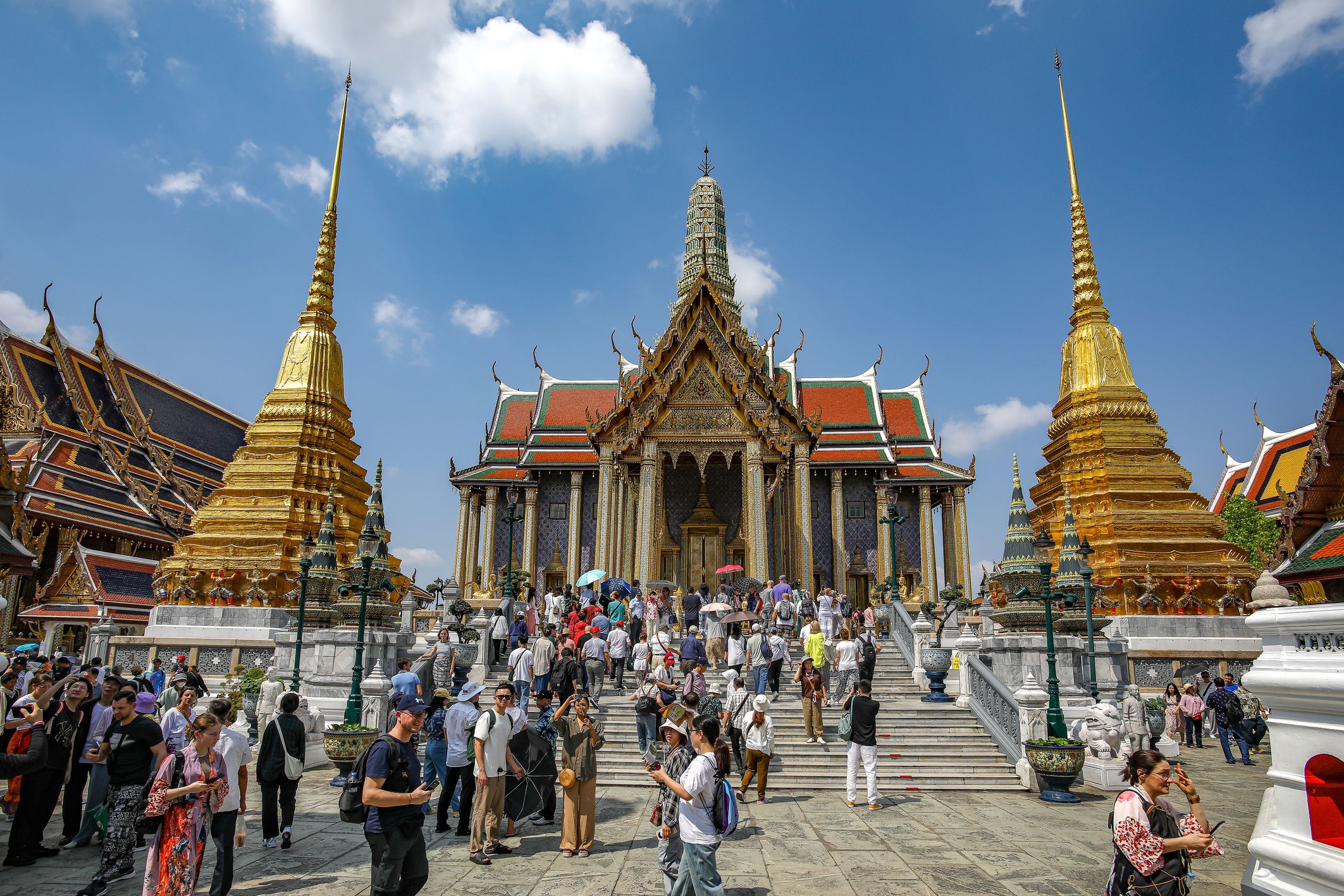
บริษัททัวร์ก็ถือเป็นอีกแรงหนึ่งที่คอยขับเคลื่อนการท่องเที่ยวไทยมานาน แม้ปัจจุบัน คนต่างชาติจะแบกกระเป๋าเที่ยวเองมากขึ้น แต่ยังมีแนวทางหลายอย่างที่ผู้ประกอบการเหล่านี้สามารถปรับตัวให้ธุรกิจดำเนินต่อไปได้ “ผู้ประกอบการควรใช้ไอทีและโซเชียลมีเดีย [สื่อสาร] กับนักท่องเที่ยว [รุ่นใหม่] มากขึ้น และปรับการบริหารหลังบ้าน ใช้ฟรีแลนซ์กับ profit sharing [การแบ่งกำไร] มากขึ้น ลดต้นทุนบางเรื่องออกไป” สุเทพกล่าว
ที่สำคัญกว่านั้น บริษัททัวร์ควรทำการตลาดเจาะกลุ่มคนไทยด้วยกันเองให้มากขึ้น “ถ้าเกิดมีปัญหาขึ้นแล้วคนต่างชาติไม่มา คุณก็จะมีตลาดคนไทยรองรับไว้บ้าง เพราะเราไม่รู้ว่าจะเกิดอะไรขึ้นข้างหน้า ตอนโควิดนี่ก็เป็นตัวอย่างหนึ่งครับ” สุเทพเกริ่น “อย่างตอนนี้ จำนวนผู้สูงอายุมากขึ้นเรื่อย ๆ และมีศักยภาพใช้จ่าย... ช่วงหลังโควิด ผมเคยเขียนแผนเอาไว้ ถ้าทริปไหนที่มีผู้สูงอายุทั้งทัวร์ แล้วให้รัฐช่วยจัดหาพยาบาลมาประกบ เอาไว้เพิ่มความอุ่นใจและความปลอดภัย [แถมยังได้] ผลิตพยาบาลให้ทำงานด้วย เที่ยวไปด้วย มีความสุขกันหมดครับ”
ชุมชนเองก็กำลังมีบทบาทมากขึ้น แน่นอนว่า รัฐต้องจัดหาองค์ความรู้ ทรัพยากร และคมนาคมเพื่อสร้างแหล่งท่องเที่ยวชุมชนสักแห่ง แต่ทุกอย่างจะดำเนินต่อไปได้ หากคนในชุมชนกระตือรือร้นและใส่ใจ “ด้วยพฤติกรรมของนักท่องเที่ยวที่เปลี่ยนแปลงไป ระยะเวลาจะเหลือสั้นลงมากครับ เช่น จองวันนี้ อยากไปพรุ่งนี้ แต่โดยธรรมชาติของการท่องเที่ยวชุมชนเป็นอย่างไรครับ ? เราต้องเตรียมการล่วงหน้าอย่างน้อย 3 วัน 7 วัน [ดังนั้น] เราต้องอาจดูว่า… กระบวนการดำเนินงานของชุมชนเอง สามารถปรับเปลี่ยนให้สอดคล้องกับพฤติกรรมนักท่องเที่ยวได้แค่ไหน” ธนาวุฒิ ศุภางคะรัตน์ ผู้ประกอบการเพื่อสังคม SiamRise Travel กล่าวไว้ในรายการฟังเสียงประเทศไทย
ทั้งหมดนี้เป็นการวิเคราะห์ภูมิทัศน์การท่องเที่ยวไทยในปัจจุบันโดยสังเขป บางที มนต์เสน่ห์ของสยามเมืองยิ้มอาจยังไม่มลายหายไปเสียทีเดียว แต่นั่นก็ไม่ได้หมายความว่า เราควรอยู่นิ่งเฉยแล้วรอให้นักท่องเที่ยวกลับเข้าไทย นี่อาจเป็นโอกาสที่ดีที่สุดในการปรับเปลี่ยนหลายสิ่งอย่าง เพื่อให้การท่องเที่ยวไทยยืนหนึ่งได้อย่างที่หลายคนหวัง
ไทยพีบีเอสเขียนอังกฤษให้ไทยอ่านผ่าน ‘บทความ 2 ภาษา’ พร้อมเรื่องราวเชิงลึกจากหลากหลายวงการ
- แลหลังมองหน้า ‘วงการนางงามไทย’ | Understanding Thai Beauty Pageants
- ‘น้ำหอมไทย’ กับอนาคตอันแสนหอมหวาน ? | The (Promising) Future of Thai Perfumes
- ‘ทักษะภาษาอังกฤษ’ ยิ่งส่งเสริม ยิ่งถดถอย ? | How to Boost English Proficiency among Thais?
According to the Ministry of Tourism and Sports, the cumulative number of international arrivals in Thailand was 24.11 million during the first nine months of 2025, down from last year’s 26.08 million during the same period. On the other hand, Asia-Pacific saw a 12-percent increase in international arrivals over the first five months of this year, with Vietnam and Japan being top destinations. The image of Thai tourism thus seems to be even more declining.
Given these initial data, some might be worried that Thai tourism can no longer thrive. But in reality, are things really going terribly? And what can we do to make Thai tourism outstanding again?
Is ‘monotony’ becoming more threatening than ‘security’ to Thai tourism?
The surge in scammers and human trafficking in Thailand and its neighboring countries has been cited as a primary reason for the decline in international tourists. In January 2025, a Chinese celebrity was tricked into working for a fraud ring in Myanmar, with the border in the Thai province of Tak being used as a passage. Such news could affect foreigners’ trust in Thai security measures, especially the Chinese, who are the largest source of tourists to the country.
In reality, the question of security may not affect tourism as much as one might think. During the latest Golden Week (September 26-October 2, 2025), 22,000 Chinese tourists arrived to Thailand per day. Prices of plane tickets on the Bangkok-Beijing route also rose up to 400% compared to the normal periods. Another change among the Chinese is that many of them have become free independent tourists (FIT). Instead of buying a traditional travel package, they discover new tourist attractions online and may decide to book everything at the last minute.
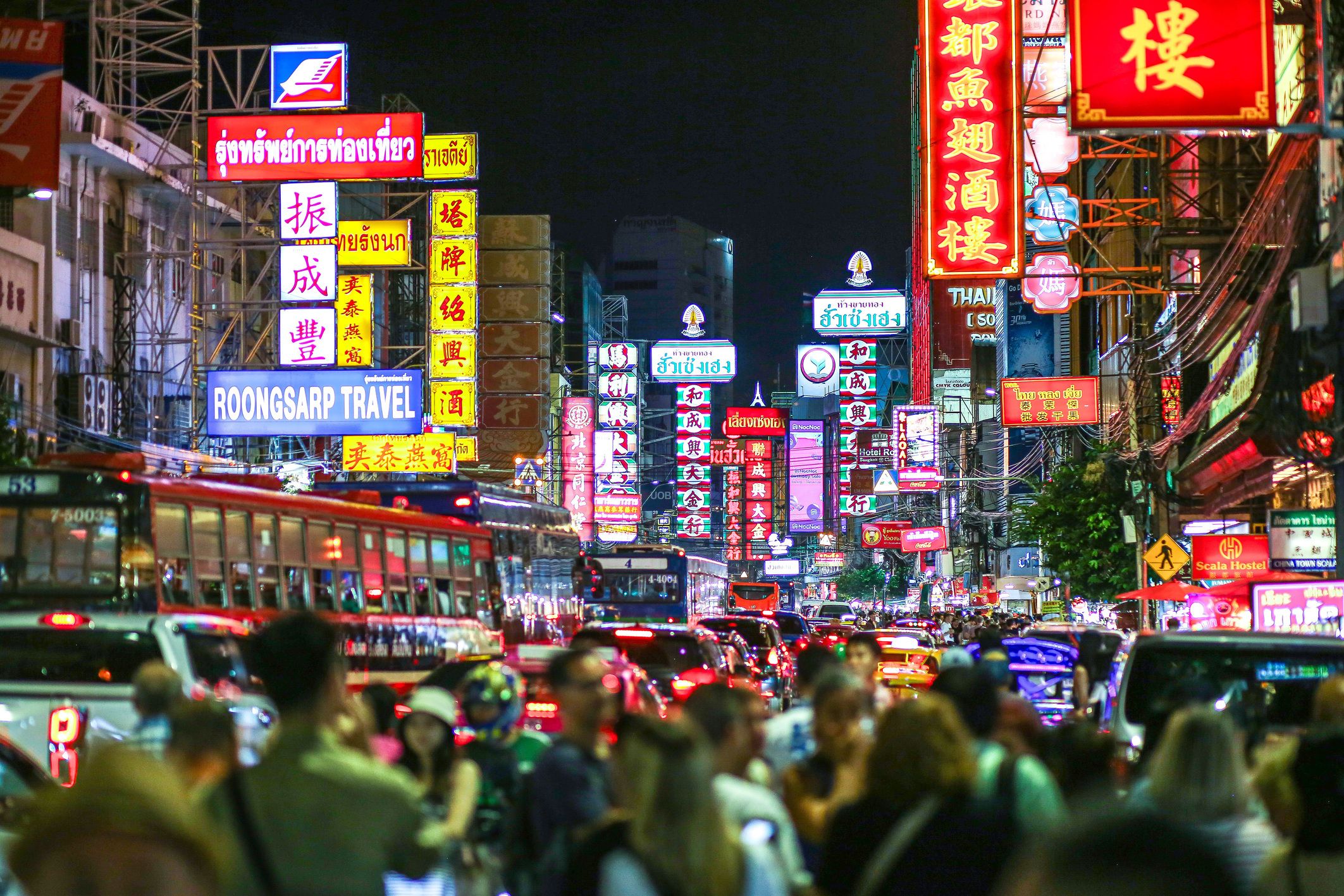
“The scammer problem, in fact, has no effects on our tourism. Even the foreign tourists are not concerned about this because they already are cautious when traveling… Even the Chinese I’ve met have said that they are not worried,” said Dr. Suthep Aromrucks, the president of the Thai Tourism Promotion Association and the founder of Silver Stone Tour & Travel Co., Ltd.
The increase in long-haul tourists from Europe, the Middle East and Africa has maintained this year’s tourism revenues. It could also suggest that international visitors are reassured about Thailand’s security and surveillance whether they come for a short or long stay. As Mike Yu, a British expat and influencer based in Thailand, told Thai PBS World in September 2025: “[In London,] you can't even pick up your phone in public, whereas in Thailand it's the complete opposite.”
Nevertheless, an economic slowdown and lack of new man-made sites directly affect Thai tourism more than a question of security, and both issues are inseparably intertwined.
New US tariffs, global politico-economic uncertainty, a high rate of unemployment, natural disasters and AI disruption: all have implications for global economy. As some people may have less money in their wallets, leisure travel is often postponed. These people are ultimately the ones who have disappeared from the Thai tourism landscape. At the same time, some countries see constant influxes of foreign visitors for different purposes, which consequently benefits their tourism sectors.
“For example, Singapore’s [economy] isn’t necessarily performing better than other markets. But, if we look at its visitors’ backgrounds, these people enter Singapore for business purposes or conferences, then visit tourist attractions in their free time. Despite global economic stagnation, these people have to travel for such purposes,” explained Suphajee Suthumpun, the then-CEO of Dusit Thani group, on a Thai PBS program in July, 2025.
When the economy slows down, many countries launch campaigns to encourage their citizens to travel domestically. Thailand has implemented some of those campaigns, such as ‘Half-Price Thai Travel’ and the promotion of tourism in 55 lesser-visited provinces. Yet, some countries do more than investing money in subsidies and advertisements.
As Suthep observed the changes in China: “The Chinese economy is not in a great shape either. That is why they promote domestic tourism to the people, then they create something new. They have been watching [Thai tourism] over 10-20 years, noticing Thai people’s smiles, great service and cleanliness. So, they implement all of these. Chinese people love to visit Thai temples and make merit… they’ve built some temples in Xishuangbanna… Whatever Thailand has to offer, Xishuangbanna now does as well.”
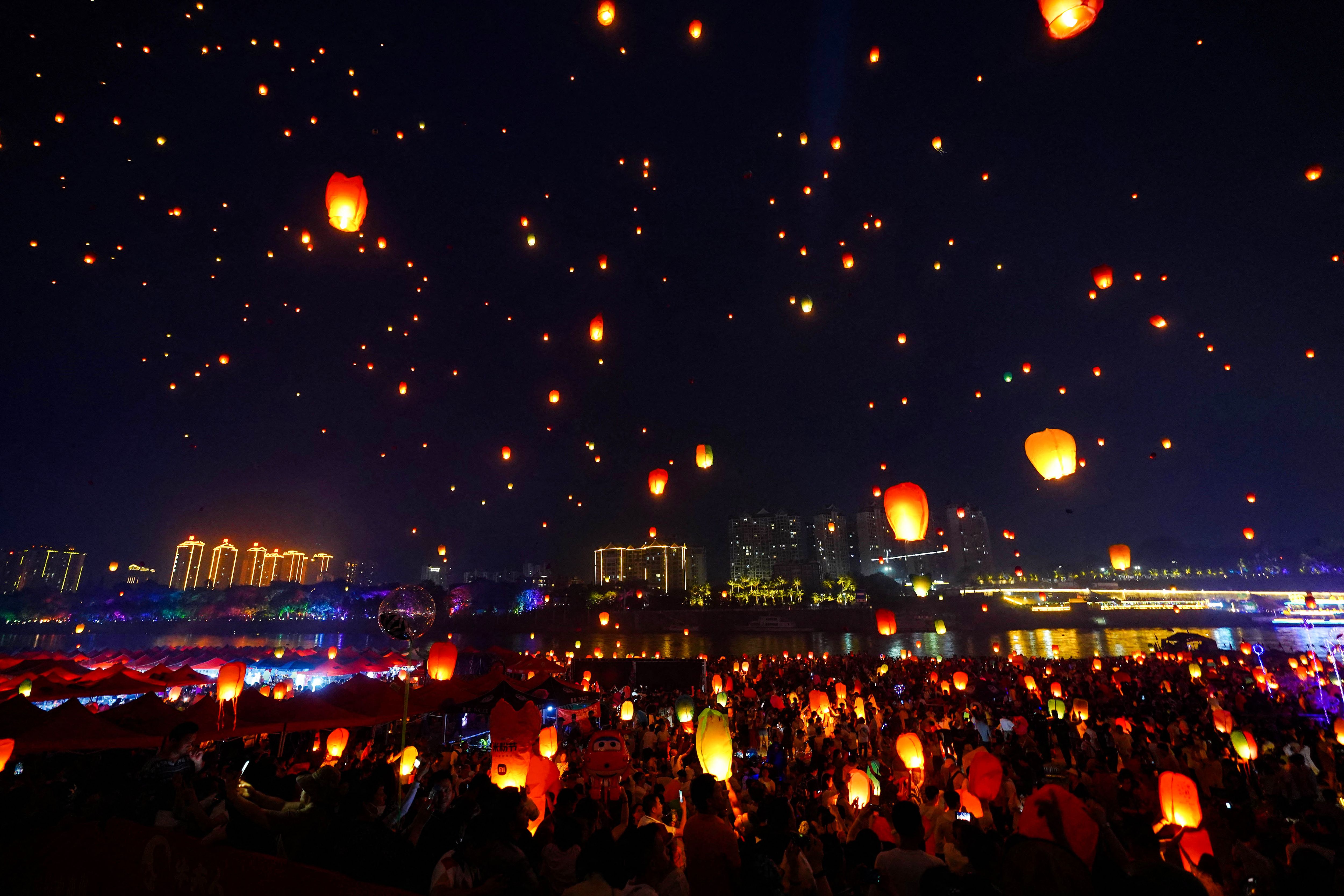
While neighboring countries develop new tourist attractions, Thailand faces some systematic challenges obstructing the creation of novel infrastructure and landmarks. It is not surprising that more foreign tourists choose to visit other countries instead of Thailand. “Vietnam always has new spots all over the country… Bà Nà Hills, Sa Pa or Phú Quốc, you name it. There are cable cars and other sites that could make it to the world’s top lists. So, tourists keep visiting,” Suthep stated. “There would be nothing if they hadn’t constructed anything new. Thailand can definitely compete, yet we don’t have any brand-new spots to attract [repeat] visitors.”
Another concerning issue is the rise of illegal foreign businesses, especially in Bangkok, Chon Buri, Surat Thani, Phuket and Chiang Mai. These businesses, often operating by Thai nominees and front companies, threaten the existence of local hotels, restaurants and travel agencies, by taking potential clients and causing a loss of revenue and tax income for the community. In Suthep’s opinion, some local entrepreneurs have been willingly involved in these illegal activities: “Grey businesses from abroad couldn’t have made it by themselves. [In the case of accommodations,] they first leased the entire apartment or hotel from Thais. At some point, they made an offer… ‘You should sell the property to us, we’ll run the business ourselves.’”
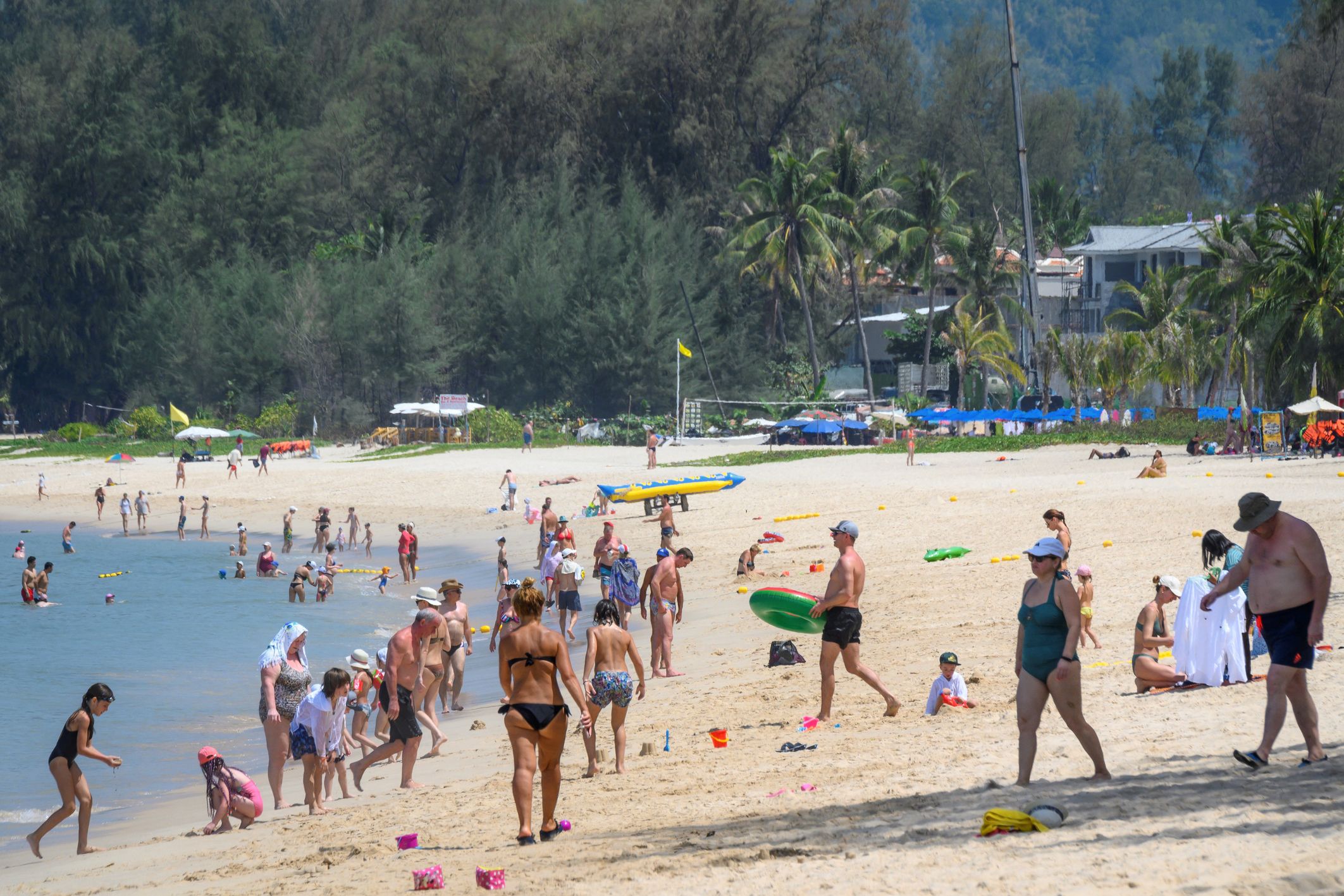
Given the current challenges, it is high time to find new solutions and possibilities so that Thai tourism and all stakeholders can thrive again.
[Now,] we are ‘one of the choices’ for travelers. We used to be [the number one choice], and in fact our rank is still high. But more countries are competitive in the world’s tourism scene. We must find ways to be ‘The One’ or ‘The Choice’ once again. – Suphajee Suthumpun
Let’s “rebrand” Thai tourism!
Whether running a big or small business, entrepreneurs are all adjusting to the present conditions in their own ways. One thing they have in common is their desire for authorities to fully support the private sector. “Tourism has always been driven by the private sector. In the developed countries, public agencies grant concession to private companies [on various projects],” Suthep added. “If investors are interested in [the construction of the Phu Kradueng National Park cable car, for instance,] the state doesn’t have to invest. Just let private investors do it. Make a contract indicating the operational duration before transferring the property to the state. And create jobs for locals as well.”
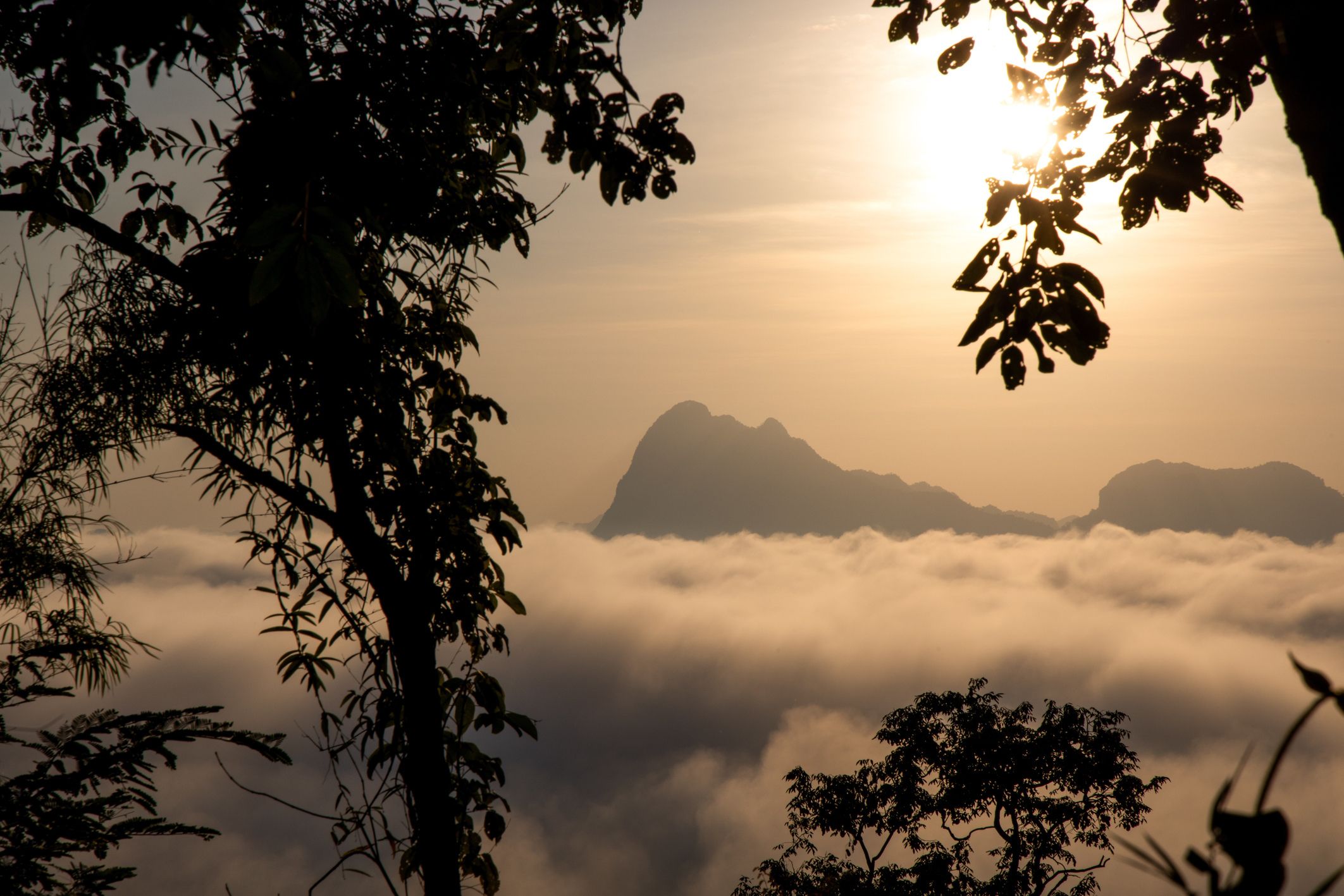
According to Suphajee, as a then-executive, authorities must not only work to increase the potential of Thai tourism and its personnel, but also tackle bureaucracy. As Suphajee suggested: “bring all relevant departments and divisions to collaborate toward the same goal, which is to drive Thai tourism.” Regardless, both public and private sectors must “rebrand” Thai tourism so that international visitors will come back repeatedly.
This year, there have been a wide range of proposals to reimagine the industry. Suphajee once suggested three new three features for Thai tourism – Green, Creative and Smart – which match contemporary travelers’ behaviors and align with sustainable development goals.
Green tourism is more than just sightseeing in natural areas and building awareness about climate change; it also means entrepreneurs must be urged to maximize their resources while reducing pollution as much as possible. The state must also support businesses through these sustainable transitions. “When businesses want to invest in renewable energy, for example, by installing solar panels or windmills, they should get tax deductions,” Suphajee suggested. “[If hotels want to tackle food waste] and authorities ask them to install food waster composters in their facilities, they will of course want subsidies or tax reductions.”
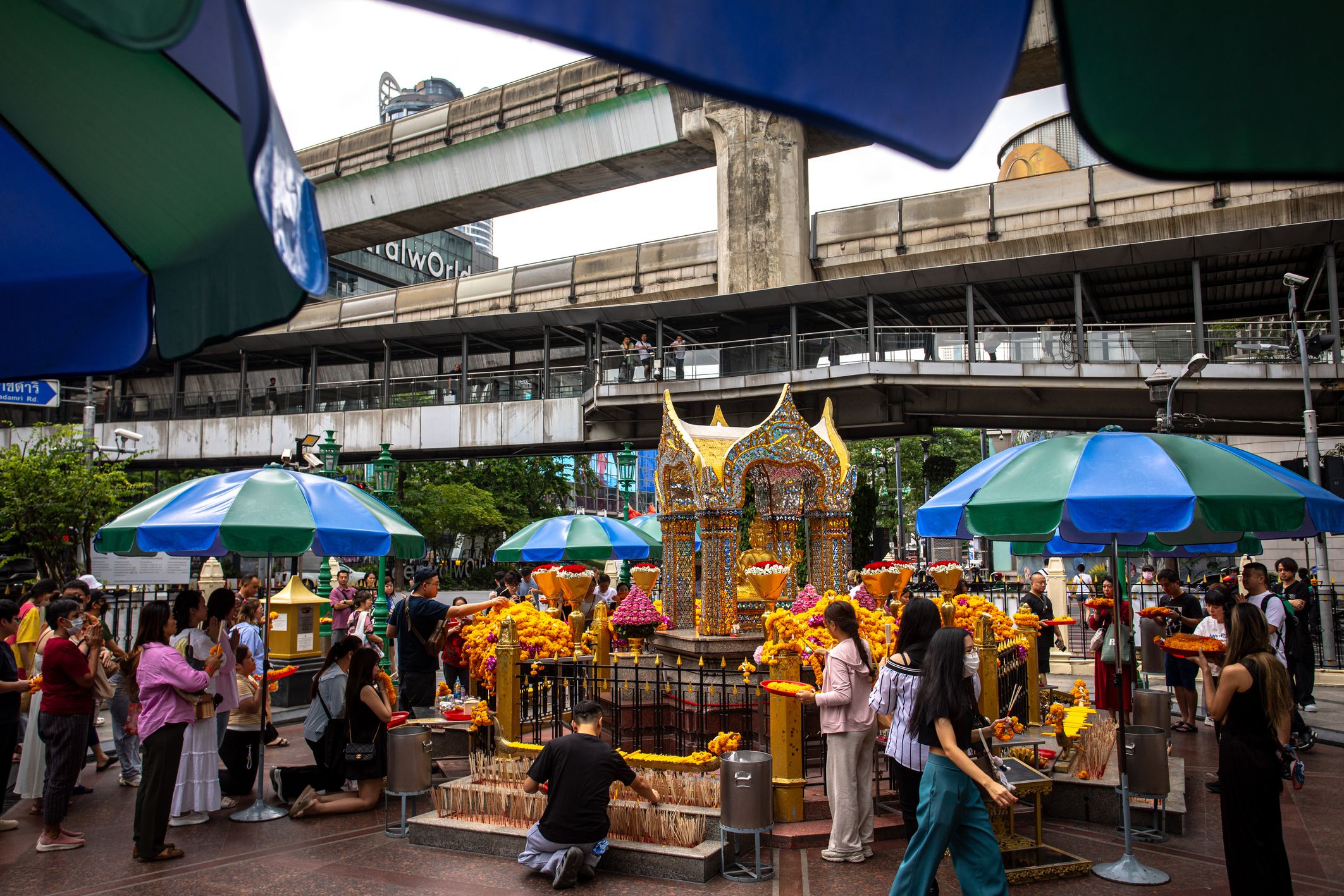
Elements of Thai soft power, from BL series to traditions and history, could be integrated into creative tourism. In the northeastern region, or Isan, community-based tourism such as ‘sacred’ trips to shrines and paleontology-themed excursions have become more popular among Thai nationals. Creativity and local heritage can be valuable, provide jobs, give a sense of belonging and bring sustainable developments to an area. Public agencies related to education, tourism and culture can provide knowledge and crucial know-how to communities so that they can run businesses independently. If done right, community entreprises can be passed on through generations.
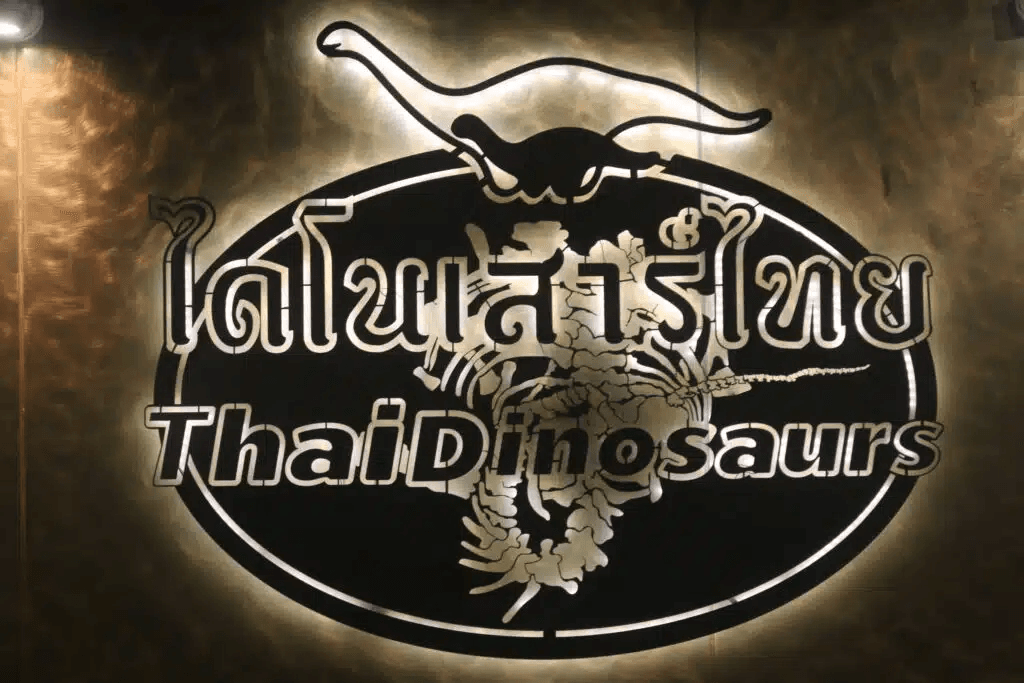
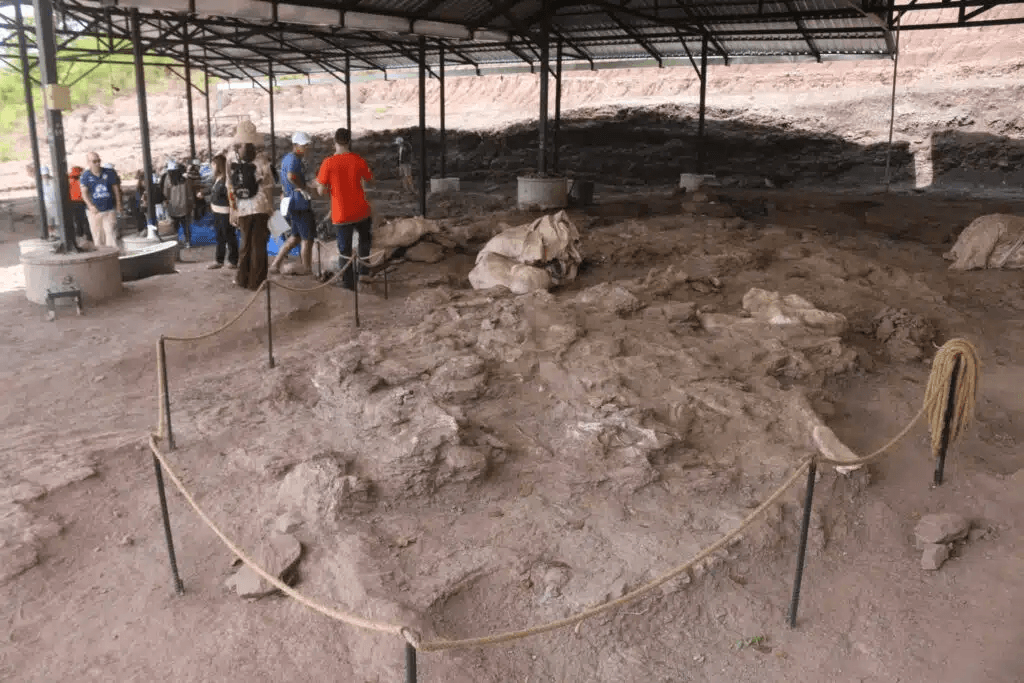
Sanya Makarin, a local social entrepreneur in Si Chomphu district of Khon Kaen province, shared a guideline for community-based tourism on a Thai PBS program back in August 2024: “We do everything to develop our area beyond tourism. We are engaged in education; we use new tools; we build a sense of belonging so that locals see the potential of their land. We begin to work with teachers and villagers, and we let them try working on something different.”
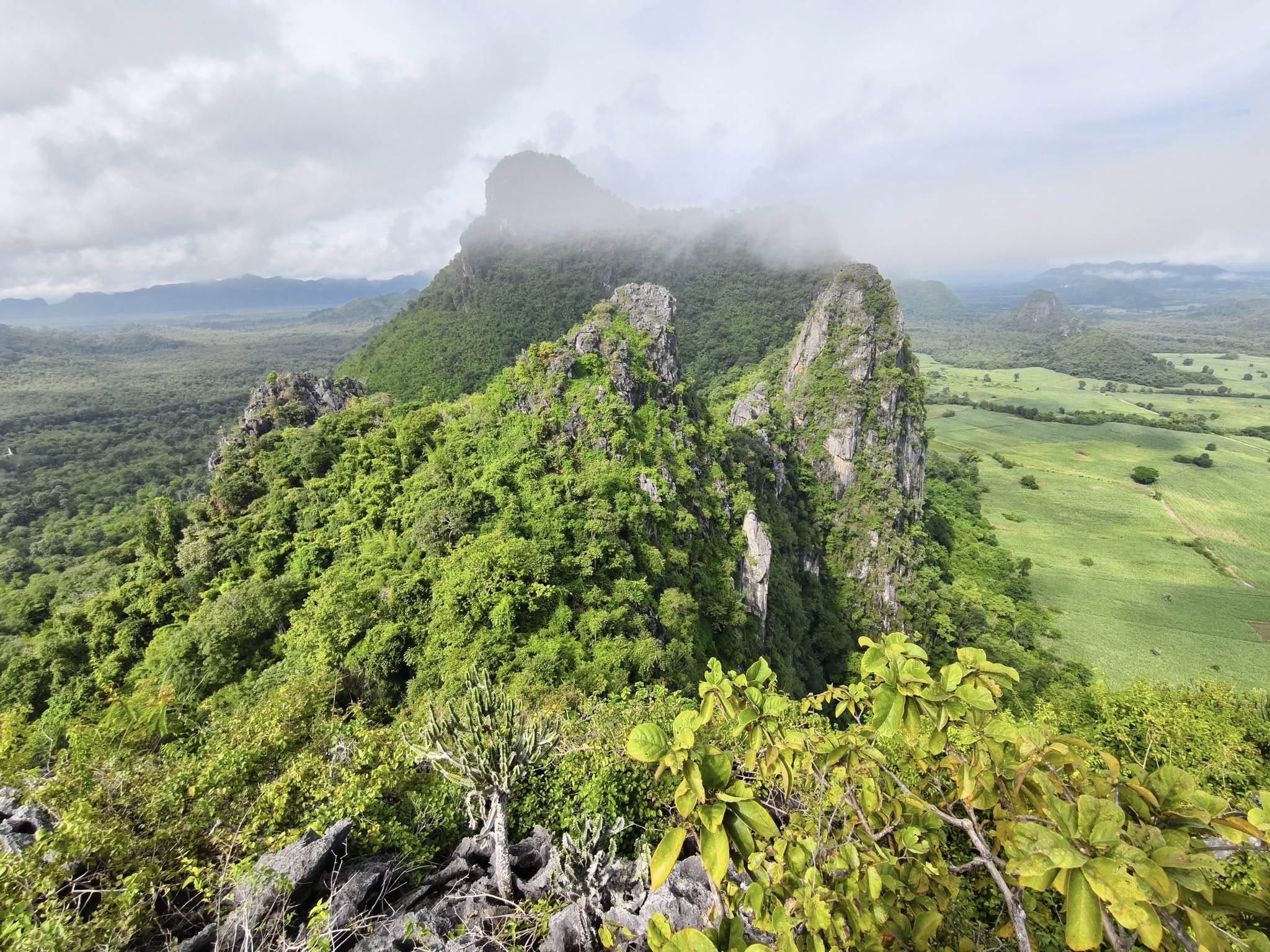
As for smart tourism, its selling points should be both convenience and security. All hotels and tourist spots must at least provide high-speed Internet; if the facilities are ready, smart devices should be in service to accommodate digital nomads and Gen Z travelers. Also, travel agencies can create new platforms that focus more on FITs and offer customized tour programs, replacing traditional, fixed ones. Most importantly, authorities should implement AI as well as technology in the surveillance systems to analyze and prevent crimes. Strict regulations on security must be enforced as well.
In addition to rebranding, authorities should come up with promotions and employ “hard sells” tactics to persuade potential tourists. Visa exemptions were a good start to reduce international visitors’ costs and time. But Suthep thought that subventions and incentives were also crucial to inject directly cash into the tourism sector. Authorities could implement incentive programs specially to promote all 55 lesser-visited areas in the country.
“I was thinking… ‘why don’t you have a cash voucher giveaway at immigration checkpoints like they do in Taiwan, for visitors to spend?’ This could really help businesses. Did authorities ever do this kind of campaign? Yes, but it was discontinued,” Suthep reflected. “Another idea: the state could subsidize travel agencies to help organize trips to lesser-visited cities that we’re trying to put a spotlight on. Throw a feast for the visitors, invite them to shop and watch some spectacles – anything. The tourists will be pleased… The entrepreneurs are wondering ‘why don’t we do this?’”
Authorities often say that their duty is to promote [Thai tourism] through ads and PR campaigns… But, arousing interest and global awareness is not enough. The state should inject money to directly support micro-businesses and SMEs, as every government often states in its policies. – Suthep Aromrucks
Moreover, Thai authorities and airline companies are collaborating to open new routes for long-haul, high-spending tourists. This past October, the first Abu Dhabi-Krabi flight launched, with the first Abu Dhabi-Chiang Mai flight set to launch this November. However, there is a counter-intuitive idea for boosting Thai tourism through commercial aviation: encouraging Thai tourists to take outbound trips. Just as Thais expect international tourists, other countries want Thais to visit them. Or, from a business perspective, no airlines want their aircrafts flying back to the home bases empty.
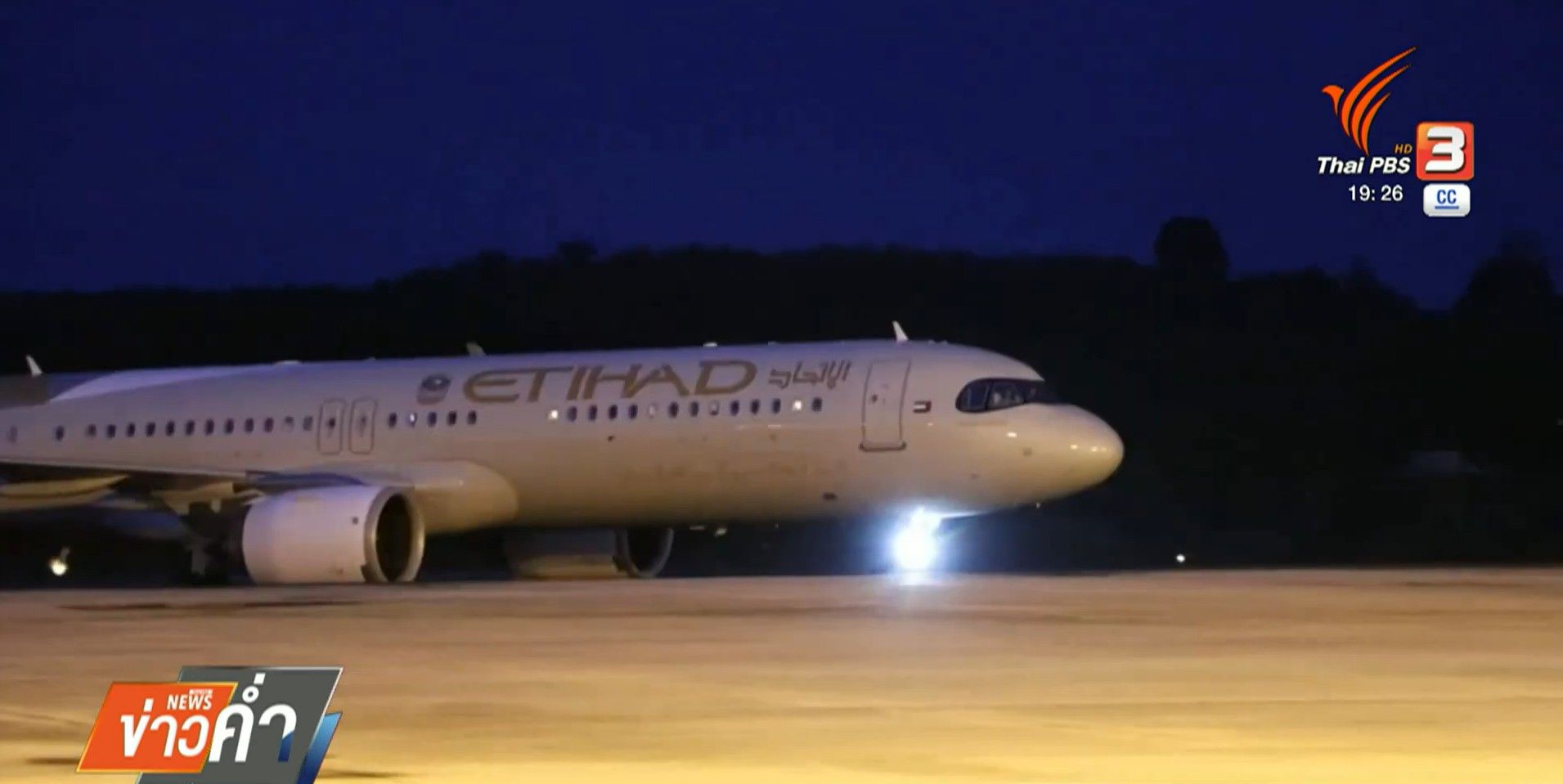
“Supposing you were a Japanese tourist coming to Thailand. You paid 10,000 baht for your outbound flight. But on your inbound flight, there were barely any Thai passengers. So, your return ticket was double [to compensate the airline’s lost revenue.] Then, would you come to Thailand again?” Suthep asked. “Therefore, if you don’t encourage Thais to travel abroad, other nationals won’t visit us either… You have to do everything you can to boost tourism by encouraging Thais to take trips both domestically and abroad.”
Don’t leave anyone (in Thai tourism) behind
All aforementioned measures can greatly benefit Thai tourism. However, we should not forget the other forces which have driven the industry for decades. For example, tour guides must receive decent support and fair earnings. “All careers reside in one tour guide: actor, teacher, lecturer, nurse, police officer, negotiator. They are the faces of Thailand,” Suthep said. “That is why the system must uplift their lives. We can make them visible on online platforms and let the tourists choose their guide. We can rate them with stars after the service. With a system like this, would they dare to behave badly? I don’t think so. If they act poorly, clients can give them bad reviews. But if they are good and recognized with awards, they can raise their wages, too. Many people are willing to pay a bit more for great service.”
Supporting existing tour guides may not be enough. All relevant parties in education and tourism should help introduce new faces to the market to solve the problems of unemployment and illegal tour guides simultaneously. As Suthep suggested: “Invite students or people who want to be tour guides to take Chinese or Russian language courses for free. Don’t charge them 30,000-40,000 baht.”
Travel agencies have also played a key part in driving Thai tourism. Despite the surge in foreign FITs and backpackers, business owners in the field can still adjust to continue their operations. “Entrepreneurs should adopt technological tools and social media accounts to communicate more with [younger] travelers. In terms of business planning, they can cut some unnecessary costs, hire more freelancers and implement profit sharing instead of paying fixed salaries,” Suthep advised.
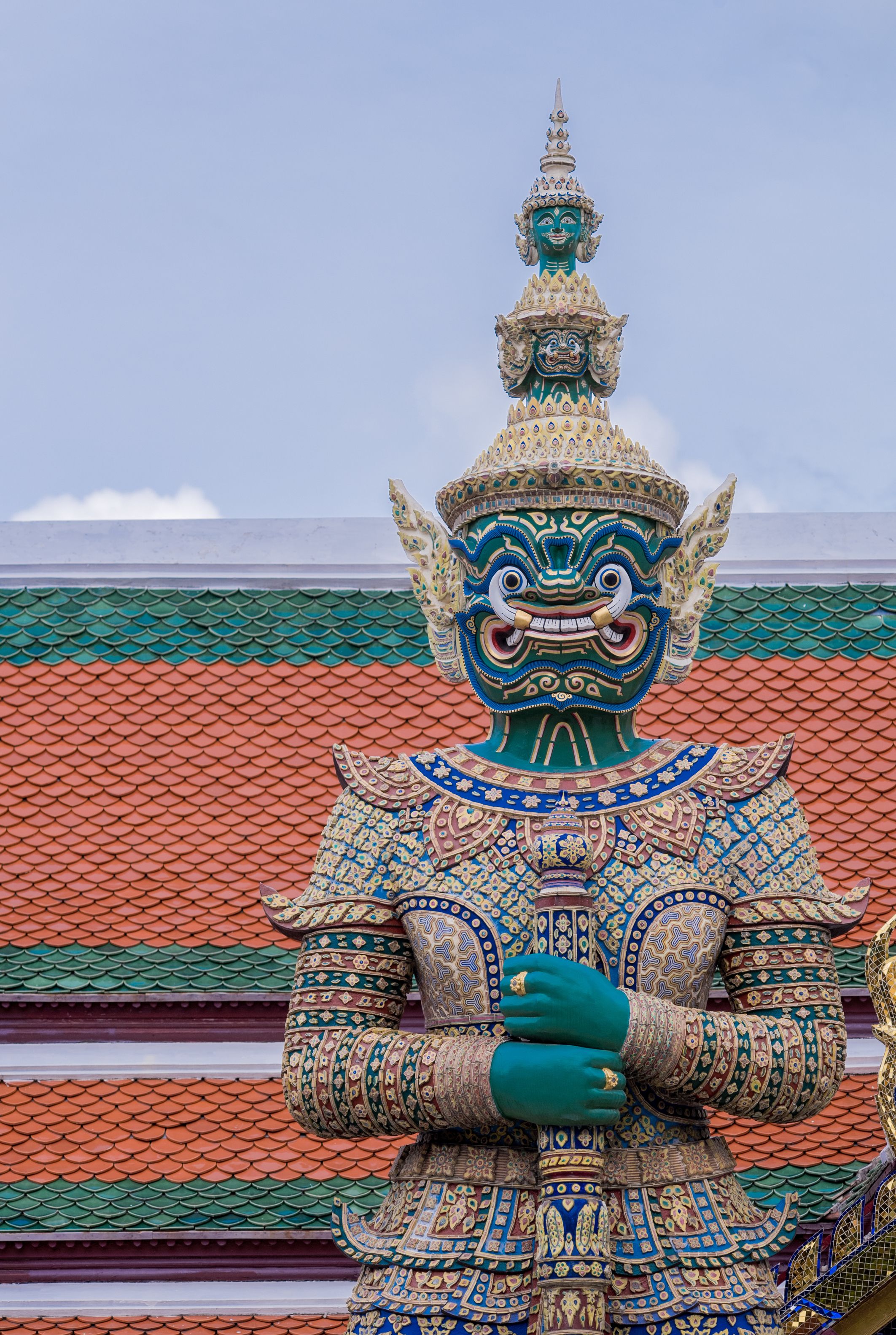
Local travel companies should focus more on Thai tourists as well. “In case there’s another global shutdown where international visitors can’t fly over, our tourism can at least be sustained Thai tourists. We never know the future, just like what we experienced during COVID,” Suthep elaborated. “Thailand has become an aging society, and the elderly are ready to spend money… I used to think of an elderly program tour accompanied by a nurse. This could make travelers feel more comfortable and safer, and the health authorities could create jobs that would allow nurses to get around. Everyone would be pleased.”
Communities are taking a significant part in Thai tourism. It is indispensable that the state provides savoir-faire, resources and infrastructure to establish local tourist attractions. Still, community-based tourism will be able to prosper and sustain itself if locals are keen and attentive to their businesses.
“Due to shifts in travelers’ behaviors, everything must be prepared on much shorter notice. They can book everything today and come to visit the next day,” said Thanawut Supangkaratana, a social entrepreneur of SiamRise Travel, in a Thai PBS program in August 2024. “But what’s the nature of community-based tourism? We need some time to make arrangements, probably three to seven days. [Therefore,] we need to observe the locals’ preparedness and ask them to adapt in line with tourists’ behavior.”
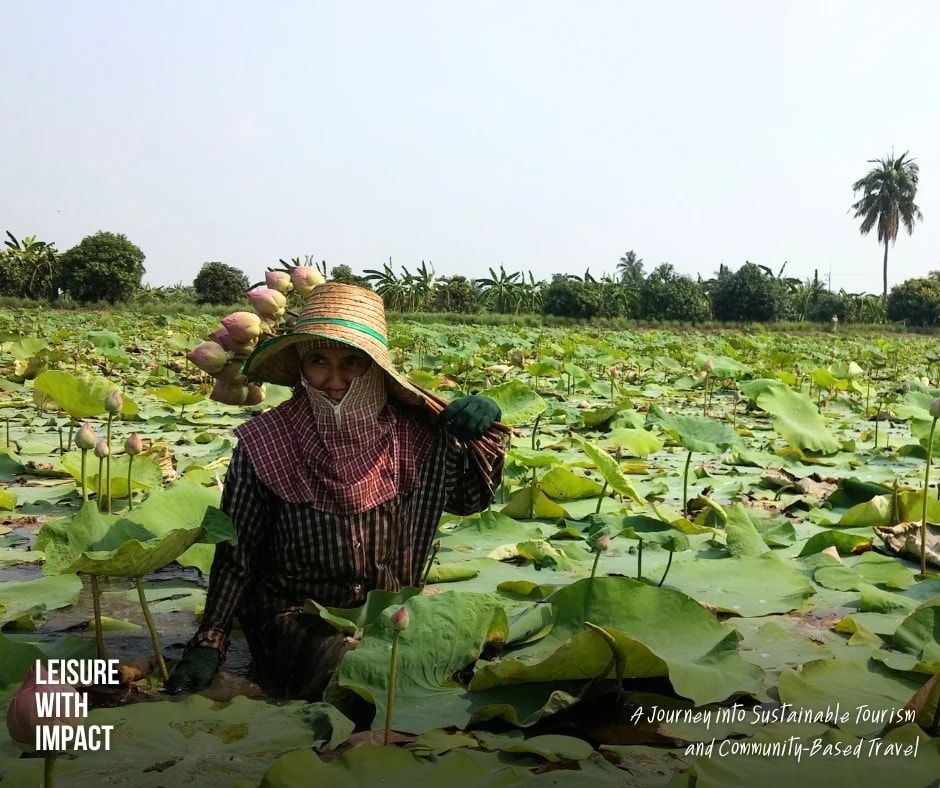
This is a summarized analysis of the current Thai tourism scene. After all, while the Land of Smiles’ charm may persist, that does not mean we can simply wait to see the influx of tourists to return. This can be our best chance to make some improvements so that the industry will stay at the top, as many wish.
Discover hidden spots of Thailand with Thai PBS World
- Roaming the Forests of Bang Kama
- Ratchaburi: Thailand’s hidden storybook
- Reliving the past, breathing in the future
- Captivated by cascades: Thailand’s most magnificent waterfalls
- From Persia to Ayutthaya: Tracing Iran’s Cultural Footprint in Thailand
อ้างอิง | References
- สถิตินักท่องเที่ยวชาวต่างชาติที่เดินทางเข้าประเทศไทย ม.ค. - ก.ย. ปี 2568 (เบื้องต้น) (International Tourist Arrivals to Thailand Jan - Sep 2025P), กระทรวงการท่องเที่ยวและกีฬา
- One iPhone led police to gang suspected of sending up to 40,000 stolen UK phones to China, BBC
Words: Peerachai Pasutan




